 |
|
HOME
|
US Navy -
ships
|
US Navy - air
units
|
USMC - air
units
|
International
Navies
|
Weapon Systems
|
Special Reports |
|
United Kingdom - Royal Navy Duke (Type 23) class Frigate |
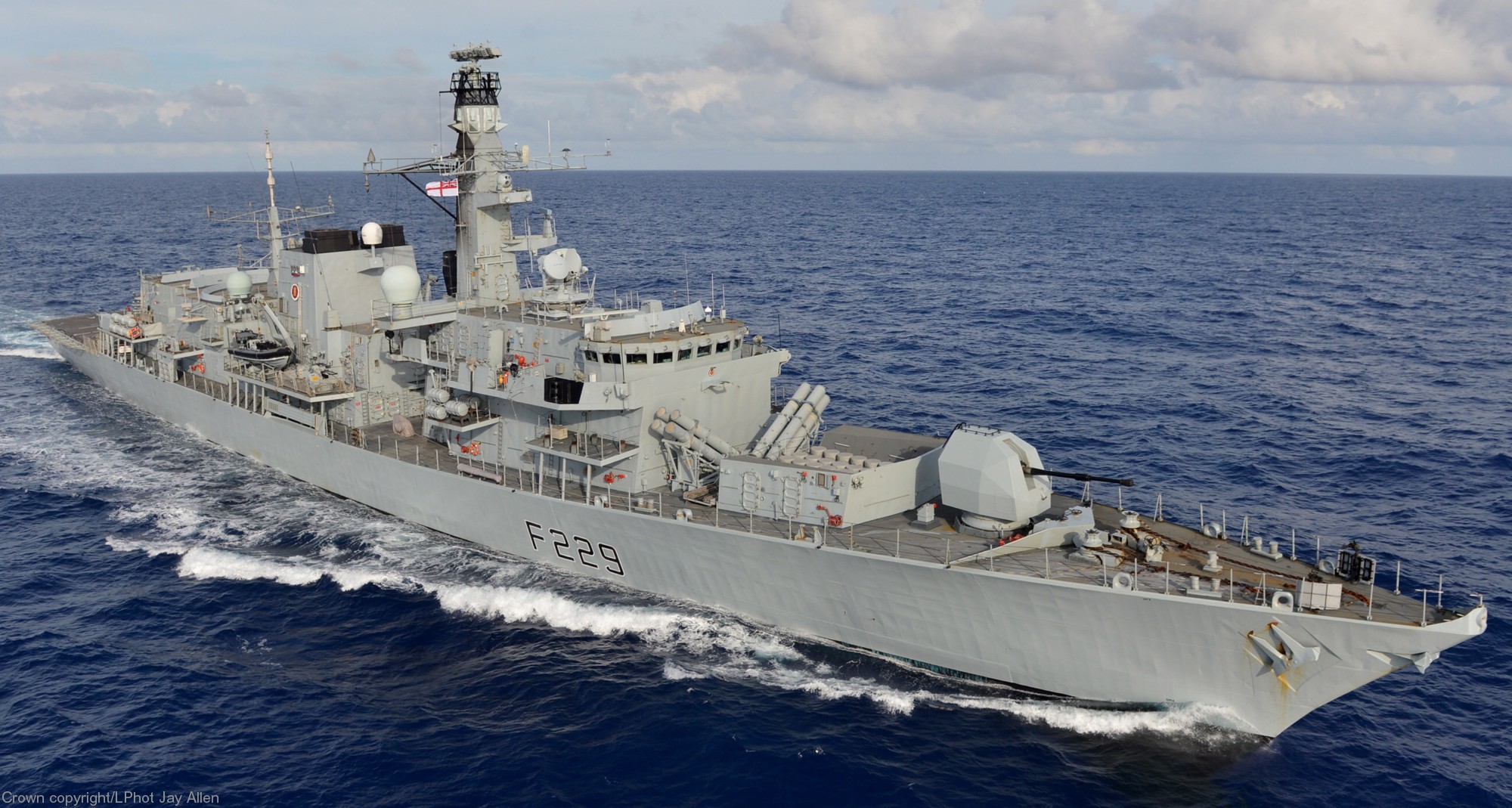 |
| 12/22 |
| Ships: |
|
F
229
HMS Lancaster (1992) F 230 HMS Norfolk (1990) F 231 HMS Argyll (1991) F 233 HMS Marlborough (1991) F 234 HMS Iron Duke (1993) F 235 HMS Monmouth (1993) F 236 HMS Montrose (1994) F 237 HMS Westminster (1994) F 238 HMS Northumberland (1994) F 239 HMS Richmond (1995) F 78 HMS Kent (2000) F 79 HMS Portland (2001) F 80 HMS Grafton (1997) F 81 HMS Sutherland (1997) F 82 HMS Somerset (1996) F 83 HMS St. Albans (2002) |
| Specifications: |
|
Length: 133 meters (436 feet 4 inches) Beam: 16.1 meters (52 ft 10 in) Draft: 7.3 meters (23 ft 9 in) Displacement: 4900 tons Speed: 28+ knots (52+ km/h) Range: 7500 NM (13900 km) at 15 knots (28 km/h) Complement: 185 (accomodation for up to 205) Propulsion: CODLAG (combined diesel-electric and gas) 4 x Paxman Valenta 12CM diesel generators (4 x 1510 KW / 2025 shp) 2 x GEC electric motors delivering 2980 KW (4000 shp) each 2 x Rolls-Royce Spey SM1C gas turbines (26150 shp) 2 shafts, 2 propellers Armament: 1 x GWS 26 Vertical Launching System (VLS) / 32 cells for Sea Wolf SAM missiles replaced by 1 x GWS 35 Sea Ceptor Vertical Launching System (VLS) / 32 cells for CAMM / CAMM-ER missiles - - - - - 1 x Mark 8 4.5 inch (114mm) gun 2 x Mk.141 quad missile laucher for up to 8 RGM-84 Harpoon SSM 2 x DS30B 30mm guns or DS30M Mark 2 30mm ASCG Systems 2 x M134 six-barreled machine guns (minigun) 2 x 12.75" (324mm) twin torpedo tubes for Stingray torpedoes Aviation: flight deck and hangar for 1 helicopter Westland Lynx HMA8 or Wildcat HMA2 or AgustaWestland Merlin HM2 |
|
The Type 23 frigate or Duke-class is a class of frigate built for
the United Kingdom's Royal Navy. The ships are named after British
Dukes, thus leading to the class being commonly known as the
Duke-class. The first Type 23 was commissioned in 1989, and the
sixteenth, HMS St Albans was commissioned in June 2002. They form
the core of the Royal Navy's destroyer and frigate fleet and serve
alongside the Type 45 destroyers. Originally designed for
anti-submarine warfare in the North Atlantic, the Royal Navy’s Type
23 frigates have proven their versatility in warfighting,
peace-keeping and maritime security operations around the globe.
Thirteen Type 23 frigates remain in service with the Royal Navy,
with three vessels having been sold to Chile and handed over to the
Chilean Navy. The Royal Navy’s current Type 23 frigates will be replaced by the Global Combat Ship starting from 2021. As of 2012 it is planned that HMS Argyll will be the first Type 23 to retire from the Royal Navy in 2023 while HMS St. Albans will be the last, in 2036. Development: When first conceived in the late 1970s, the Type 23 was intended to be a light anti-submarine frigate to counter Soviet nuclear submarines operating in the North Atlantic. The Type 23 would be replacing the Leander class frigates (which had entered service in the 1960s) and the Type 21 frigate (a general purpose design that recently entered service) as "the backbone of the Royal Navy's surface ship anti-submarine force". Although not intended to replace the Type 22 frigate, reductions in the size of the Navy due to the 1998 Strategic Defence Review led to HMS St Albans replacing HMS Coventry, a Type 22 frigate. The ships were intended to carry a towed array sonar to detect Soviet submarines in the North Atlantic and carry a Westland Lynx or EHI Merlin helicopter to attack them. It was initially proposed that the frigates would not mount defensive armament. Instead the Sea Wolf missile system was to be carried by Fort Victoria class replenishment oilers, one of which was to support typically four Type 23s. The Fort class oilers would also provide servicing facilities for the force's helicopters; the Type 23 would have facilities only for rearming and refuelling them. As a result of lessons learned from the Falklands War, the design grew in size and complexity to encompass the Vertical Launch Sea Wolf (VLS) system with an extra tracking system as a defence against low-flying aircraft and sea-skimming anti-ship missiles such as Exocet. With the addition of Harpoon surface-to-surface missiles and a medium calibre gun for naval gunfire support, the Type 23 had evolved into a more complex and balanced vessel optimised for general warfare, which introduced a host of new technologies and concepts to the Royal Navy. These included extensive radar cross section reduction design measures, automation to substantially reduce crew size, a Combined diesel-electric and gas (CODLAG) propulsion system providing very quiet running for anti-submarine operations along with excellent range, vertical launch missile technology and a fully distributed combat management system. The Vertical Launch Sea Wolf surface-to-air missile system was designed for and first deployed on the Type 23. Unlike conventional Sea Wolf, the missile is boosted vertically until it clears the ship's superstructure and then turns to fly directly to the target. Consequently, the ship's structure does not cause no-fire zones that would delay or inhibit missile firing in a conventionally launched system. Although the Type 23 is officially the "Duke" class, and includes such famous names as HMS Iron Duke, (which had been the name of the battleship HMS Iron Duke, Admiral Jellicoe's flagship at the Battle of Jutland), five of the names had previously been used on classes known as the "County class": Kent and Norfolk were names given both to 1960s guided missile destroyers and Second World War-era County class heavy cruisers, while Monmouth, Lancaster, Kent and Argyll revived names carried by First World War-era Monmouth class armoured cruisers. This use of Ducal and County names broke a tradition of alphabetical names for escort ships which had run in two - not unbroken - cycles from the L-class destroyers of 1913 to the Daring-class destroyers of 1950; this progression was revived with the Amazon-class Type 21 frigates of 1972-75, and continued with B and C names for most of the Type 22 frigates of 1976-89. However, the D names have since been used for the new Type 45 Daring-class destroyers, the first of which entered service in 2009. It is stated that: "Type 23 frigates achieved approximately 85-89 per cent average availability for operational service in each of the last five years with the exception of 1996 when the figure dropped to just over 80 per cent due to a number of ships experiencing a particular defect. This discounts time spent in planned maintenance." Unlike the Type 45 destroyer, the "Type 23 frigate does not have the capability or configuration to act as flagship and is not tasked in this way." Programme costs: Prior to the Falklands War the cost of the Type 23 frigates was estimated at £75 million (September 1980 prices) Changes following the experiences in the Falklands, including improved damage control and fire precautions led to an increased cost estimated at £110 million (1984-85 prices) By 2001, the Ministry of Defence said the cost of HMS Norfolk was £135.449 million and the remaining ships would have a final cost between £60 million and £96 million each The Ministry of Defence said in 1998 that the Merlin ASW helicopter was costing them £97M each (this was for an order for 44 airframes), and that this was 57% of the cost of Type 23. From this it can be calculated that the cost of Type 23 was £170.1M each. The Government's declared policy for construction contracts for Type 23 was "...competition, the aim being to secure best value for money for the defence budget." while maintaining "sufficient warship-building capacity to meet likely future defence requirements and a competitive base" HMS Norfolk was the first of the class to enter service, commissioned into the Fleet on 1 June 1990 at a cost of £135.449 million GBP, later vessels cost £60-96 million GBP. Upgrades and future technologies: Mid-life refit: The class are currently going through mid-life refits which last 12-18 months and cost £15-20m. Aside from refurbishment of the mess decks and drive train, the ships are being fitted with a transom flap which can add up to 1 knot to the top speed and reduce fuel consumption by 13%, and Intersleek anti-fouling paint which added 2 knots to the top speed of Ark Royal. Although the top speed of the Duke class is commonly quoted as 28 knots, the caption of an official Navy photo suggests that Lancaster was capable of 32 knots even before her mid-life refit; The Sea Wolf Mid Life Update (SWMLU) improves the sensors and guidance of the missiles, point defences are further improved with new remotely operated 30mm guns, and Mod 1 of the Mk8 main gun has an all-electric loading system and a smaller radar cross-section. The communications and command systems are also upgraded. A further refit is expected, with HMS Argyll being the first to receive this Life Extension (LIFEX) Upkeep. Amongst the upgrades will be the replacement of the Sea Wolf missiles with the new Sea Ceptor anti-air defence missiles. Sonar 2087: Sonar 2087 is described by its manufacturer as "a towed-array system that enables Type 23 frigates to hunt the latest submarines at considerable distances and locate them beyond the range at which they [submarines] can launch an attack." Sonar 2087 was fitted to eight Type 23 frigates in mid-life refits between 2004 and 2012; the five oldest Type 23 frigates, HMS Montrose, Monmouth, Iron Duke, Lancaster and Argyll are not scheduled to receive Sonar 2087. These ships will instead continue to be employed across the normal range of standing Royal Navy deployments. The Chilean Navy is procuring a number of Sonar 2087 towed arrays from Thales Underwater Systems to equip its multipurpose frigates. Artisan 3D radar: The Type 23's medium range radar will be replaced by BAE Systems Insyte Type 997 Artisan 3D radar. It is a medium range radar designed to be extremely modular and highly configurable to provide a cost-effective high-performance radar, capable of operating effectively in littoral zones and improving air-defence, anti-surface (anti-ship) and air traffic management capabilities of the Type 23 frigates. Protection measures are also added to maintain detection ranges even when attacked by complex jammers. HMS Iron Duke is the first Type 23 frigate to have received the Type 997 Artisan 3D radar during her refit in 2012–13. It will be fitted to all T23's as well as the assault platforms (LPD) - HMS Albion & HMS Bulwark, the Helicopter Platform (LPH) - HMS Ocean and the two future Queen Elizabeth class aircraft carriers are also planned to be equipped with the same radar. The project was worth £100 Million and the contract was announced on 4 August 2008. HMS Iron Duke received her new Type 997 Artisan 3D radar in 2013. It is claimed the radar is 5 times more capable than the Type 996 radar it replaces. Common Anti-Air Modular Missile: The CAMM(M) variant of the Common Anti-Air Modular Missile is intended to replace the current Sea Wolf missile currently equipped on the Type 23 frigates starting from 2016. CAMM(M) has a longer range of 1–25+ km compared to the 1–10 km offered by the Sea Wolf missile. An option exists to give the missile a surface-attack capability, though it is currently understood the Royal Navy will not take that option, due to budget reasons. Like Sea Wolf, CAMM(M) will be VLS launched, however due to its design, CAMM(M) can be packed much more tightly into the VLS, with up to four CAMM(M) fitting into the space occupied by one Sea Wolf missile. CAMM(M) is known as Sea Ceptor in Royal Navy service. Weapons, countermeasures, capabilities and sensors: Anti-air warfare 32-cell GWS26 VLS canisters for up to 32 Sea Wolf missiles (range 1-10 km) > replaced by CAMM SAM missiles 1 x BAE Systems Type 996 Mod 1, 3D surveillance and target indication radar 2 x Marconi Electronic Systems Type 911 fire control radars The Type 996 Mod 1, 3D surveillance and target indication radar is being replaced on all Type 23 frigates by the more capable Type 997 Artisan 3D radar. Anti-ship warfare 2x4 Harpoon anti-ship missile launchers for a total of 8 Harpoon anti-ship missiles. 1 x BAE Systems 4.5 inch Mark 8 naval gun has an anti-ship role. 1 x embarked Westland Lynx HMA8 or Merlin HM1 helicopter can be equipped with 4× Sea Skua anti-ship missiles. An embarked helicopter is equipped with its own dipping sonar, sonobuoys and radars. Anti-submarine warfare A Thales Underwater Systems Type 2050 bow sonar. An Ultra Electronics Type 2031Z towed sonar on five of the Type 23 frigates. A Type 2087 towed sonar on eight of the Type 23 frigate. 2 x twin 12.75 in (324 mm) tubes for anti-submarine Sting Ray torpedoes. The tubes are magazine reloaded. 1x embarked Westland Lynx HMA8 or one AgustaWestland EH101 (Merlin HM1) helicopter can be equipped with 2-4 anti-submarine Sting Ray torpedoes respectively. Land-attack 1 x BAE Systems 4.5 inch Mark 8 naval gun has a naval gunfire support (NGS) role. Guns 1 x BAE Systems 4.5 inch Mark 8 naval gun 2 x 30mm DS30M Mark 2 Automated Small Calibre Guns or 30mm DS30B guns 2 x M134 Miniguns General-purpose machine guns Countermeasures The Seagnat decoy system allows for the seduction and distraction of radar guided weapons, through active and passive means Type 182 towed torpedo decoys Type 2070 towed torpedo decoy system Thales defence Scorpion Electronic Counter Measures/UAF-1 ESM Jammer. Used to confuse or block enemy radar making the Type 23 frigate harder to detect and or locked onto by enemy radar/sonar guided weapons Electronic Systems Navigation: Kelvin Hughes Radar Type 1007 and Racal Decca Type 1008 fire-control system: Sperry Sea Archer 30 optronic surveillance/director Combat Management System: BAE Systems Command System DNA(2) Additional capabilities The Type 23 frigates have sufficient space to embark a small detachment of Royal Marines and their equipment. Ships of the class: On 21 July 2004, in the Delivering Security in a Changing World review of defence spending, Defence Secretary Geoff Hoon announced that HMS Norfolk, Marlborough and Grafton were to be paid off. In 2005 it was announced that these three vessels would be sold to the Chilean Navy and to be delivered in 2008. In September 2005 BAE Systems was awarded a £134 million GBP contract to prepare the frigates for transfer. ex-Marlborough, ex-Norfolk and ex-Grafton were sold to Chile for a total of £134 million. The letter of intent for purchase was signed in December 2004, followed by a formal contract on 7 September 2005. ex-Norfolk was handed over by the Defence Logistics Organisation and BAE Systems and commissioned into the Chilean Navy on 22 November 2006, and named Almirante Cochrane (FF-05) (after Lord Cochrane, a naval hero to both the British and Chileans). Ex-Grafton was delivered to Chilean Navy on 28 March 2007 at Portsmouth and renamed Almirante Lynch (FF-07). Ex-Marlborough was delivered to Chilean Navy on 28 May 2008 at Portsmouth and renamed Almirante Condell (FF-06). General purpose (GP) ships: Argyll, Lancaster, Iron Duke, Monmouth, Montrose Anti-submarine warfare (ASW) ships: Westminster, Northumberland, Richmond, Somerset, Sutherland, Kent, Portland, St. Albans source: wikipedia |
| images |
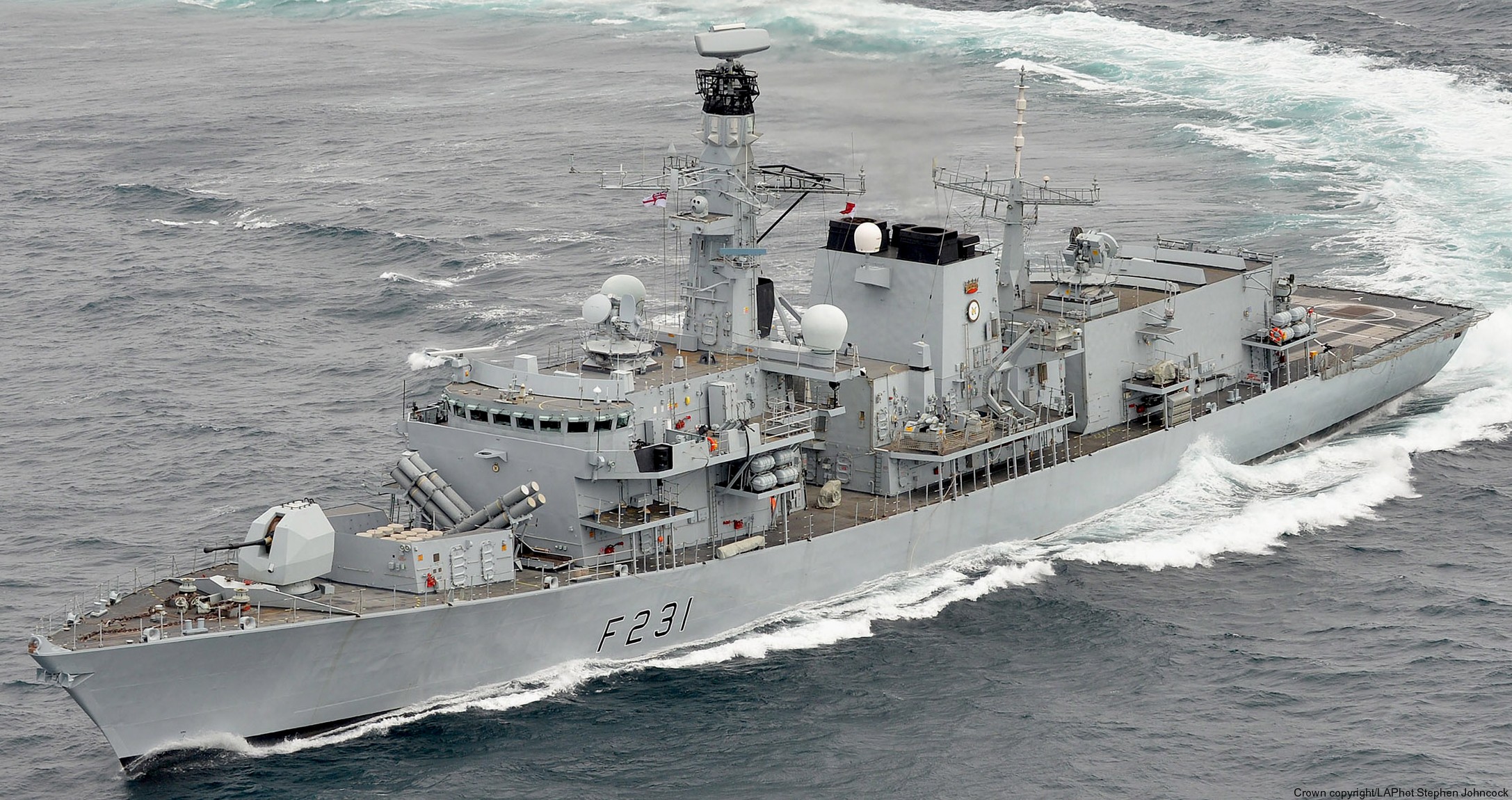 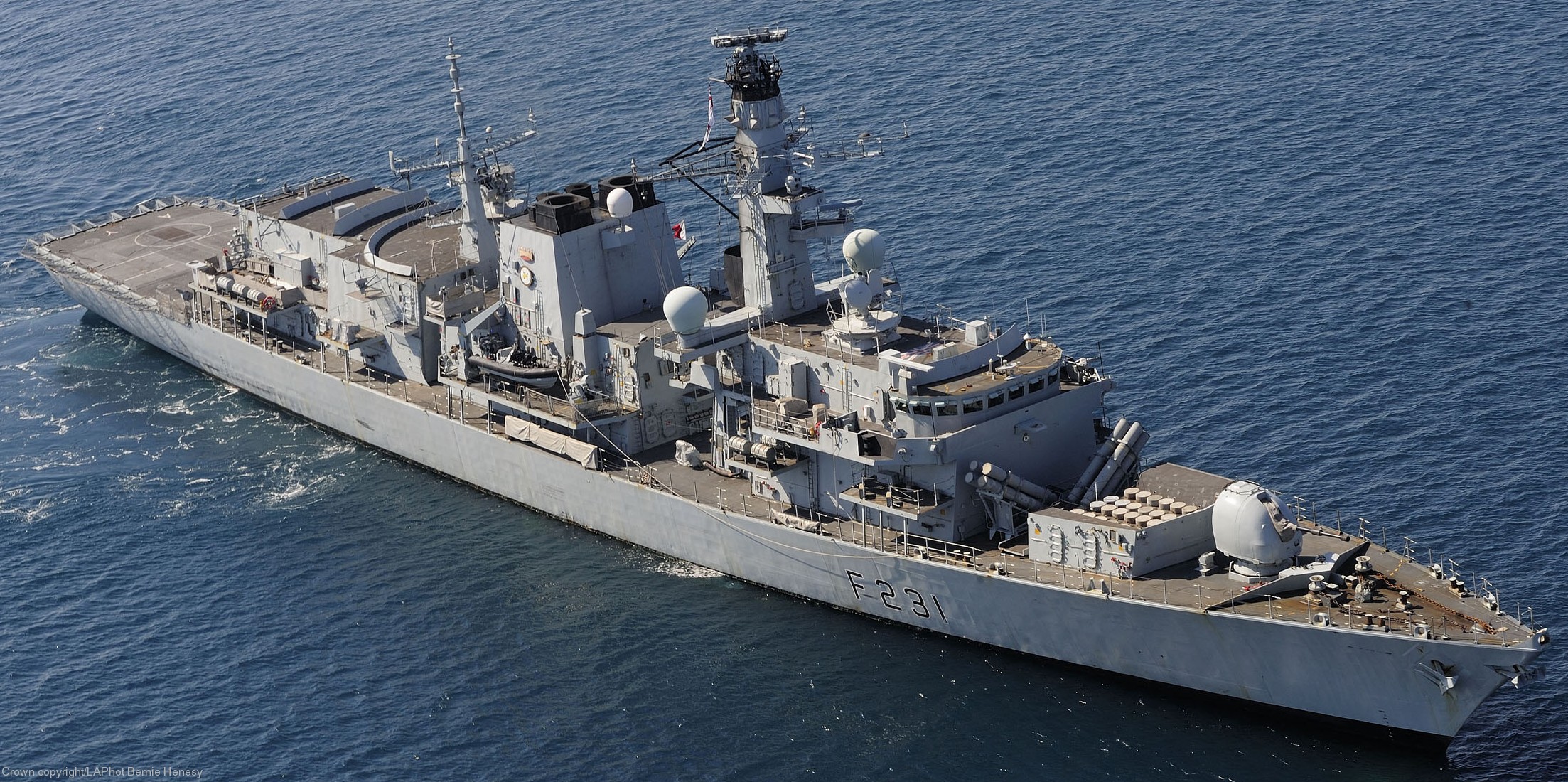 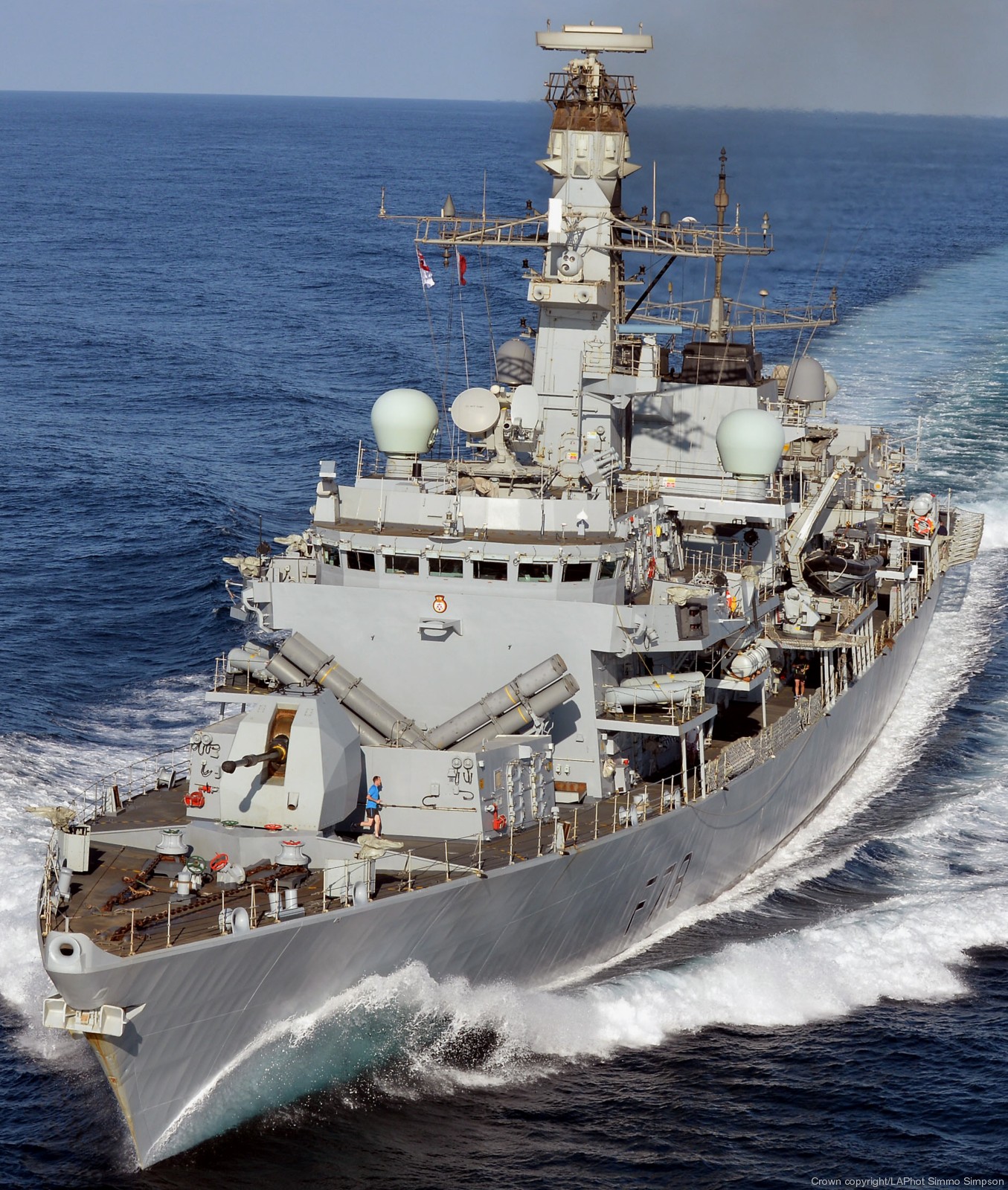 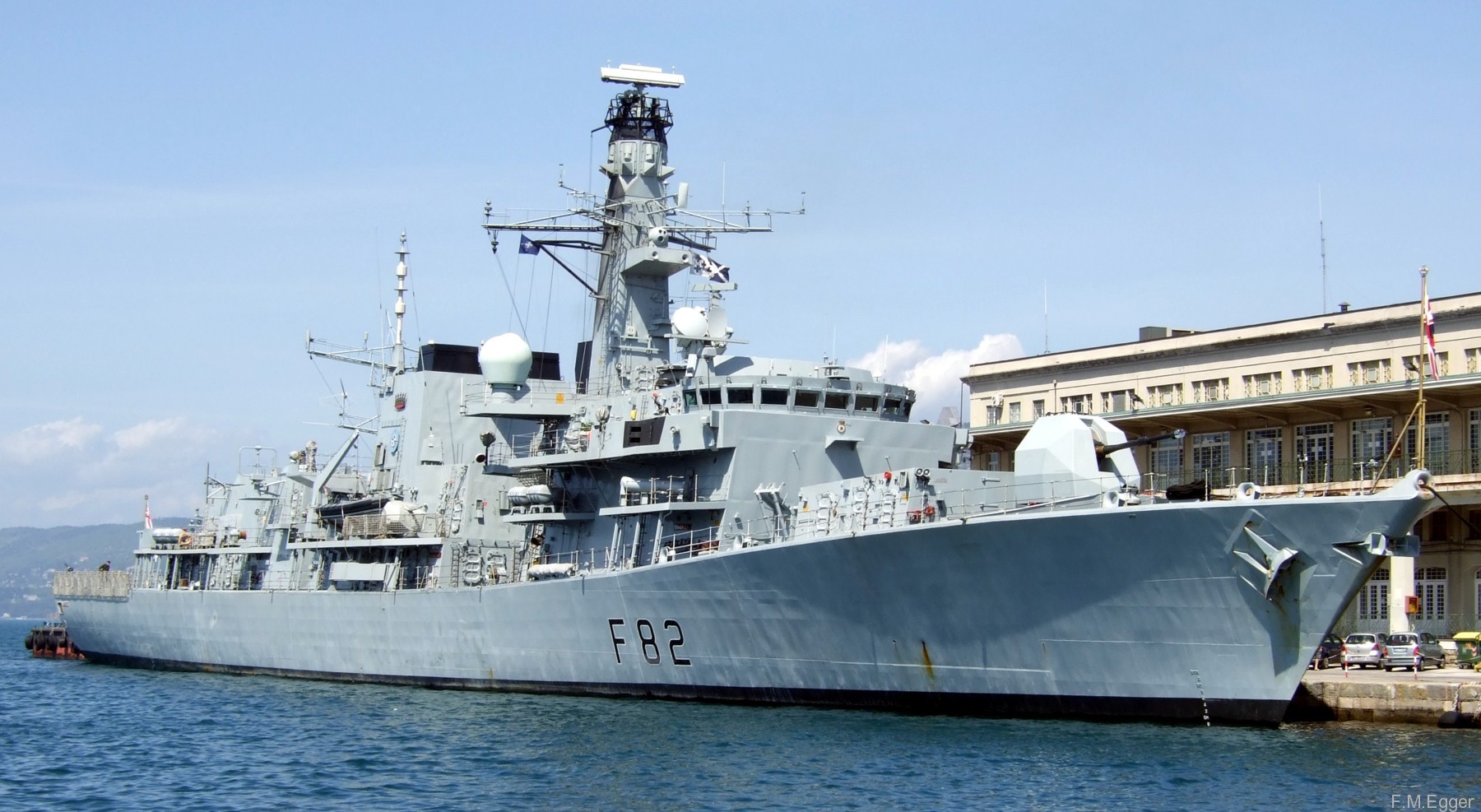 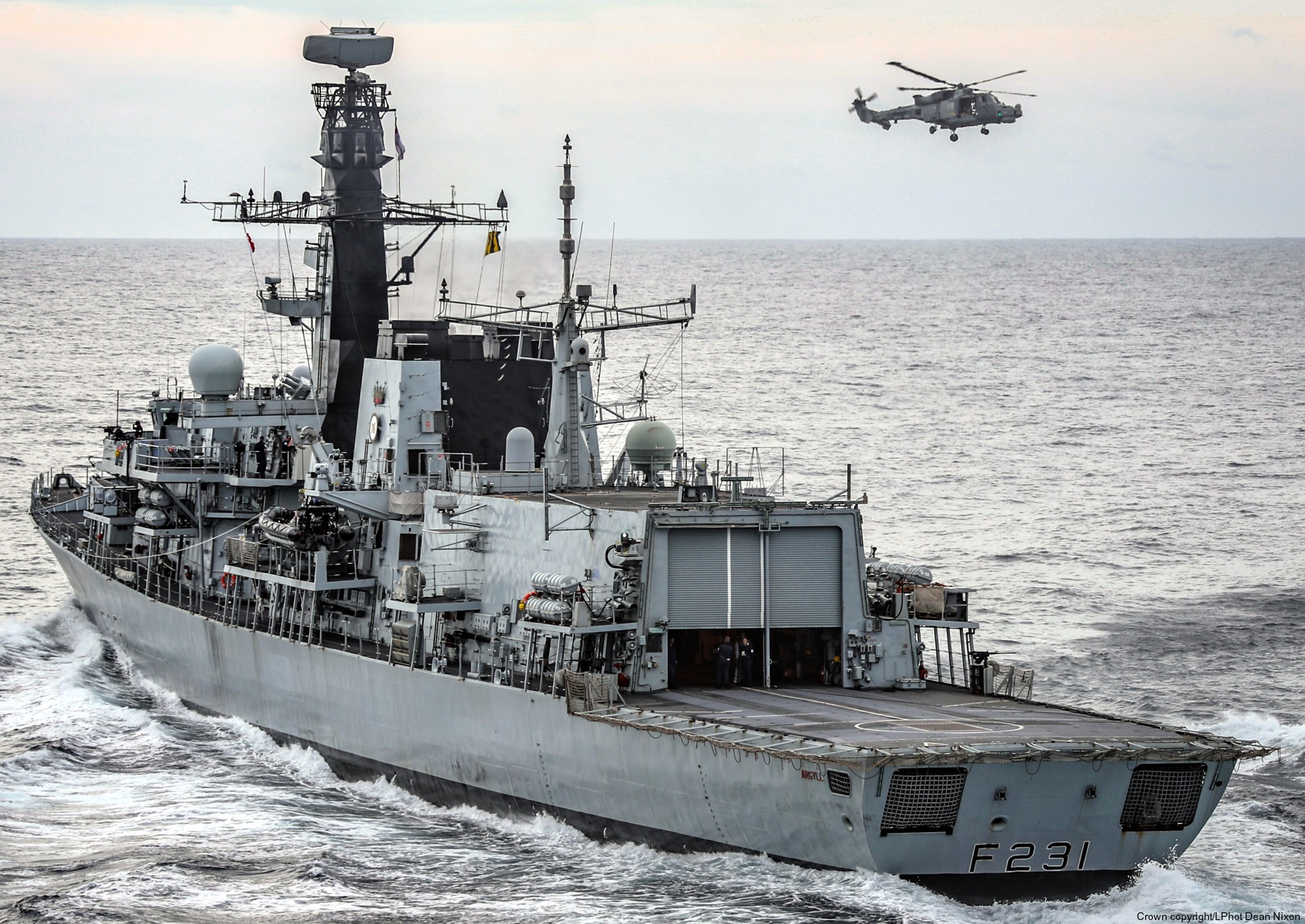 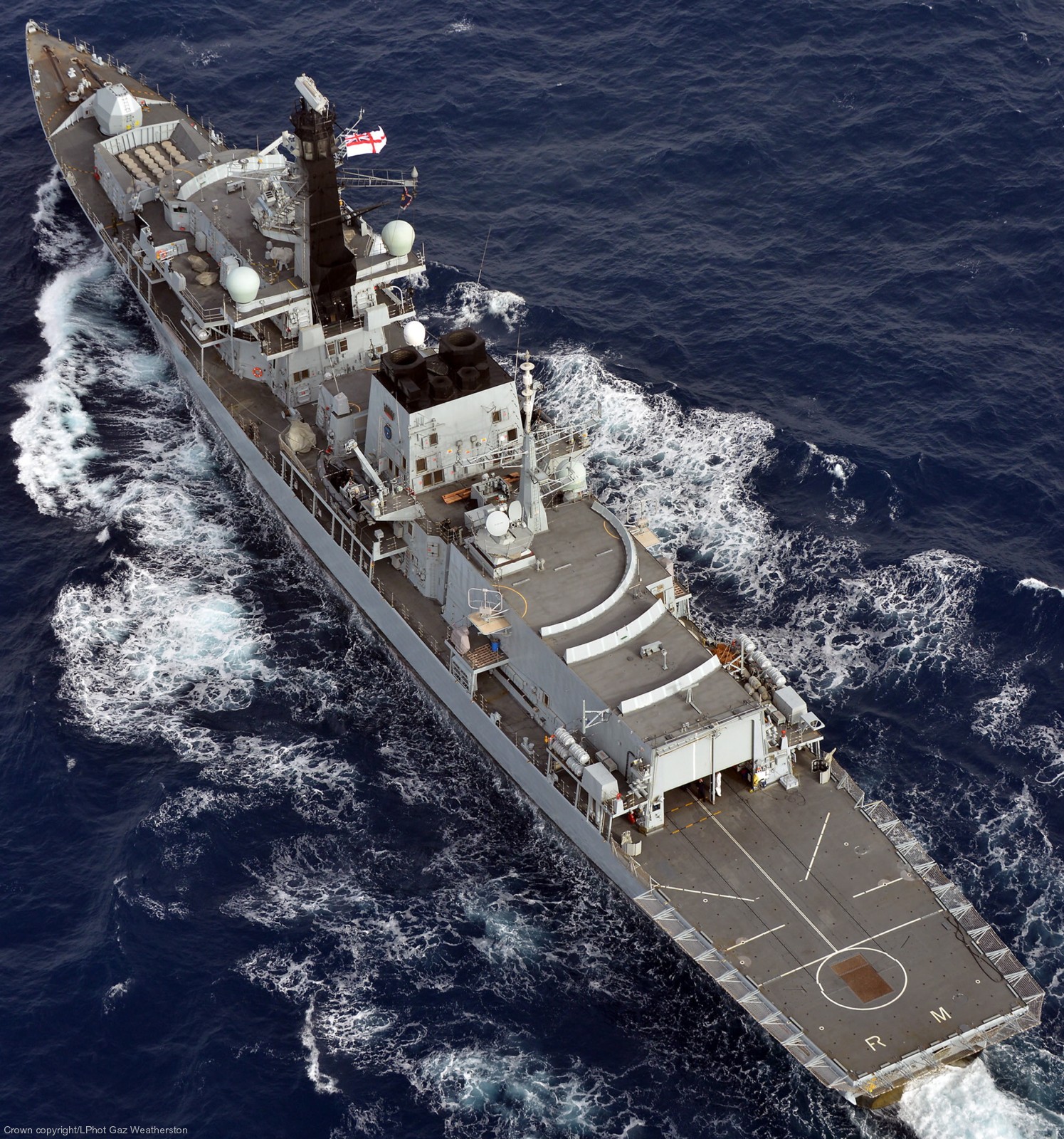 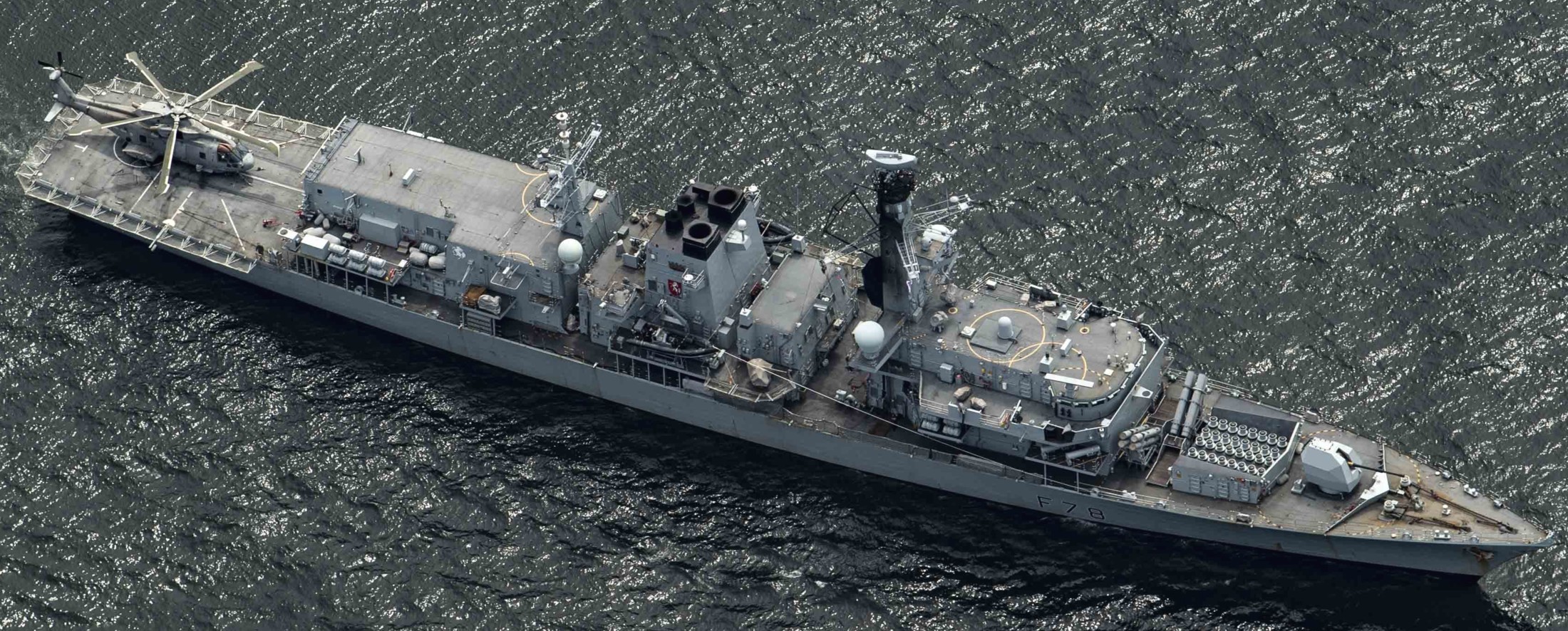 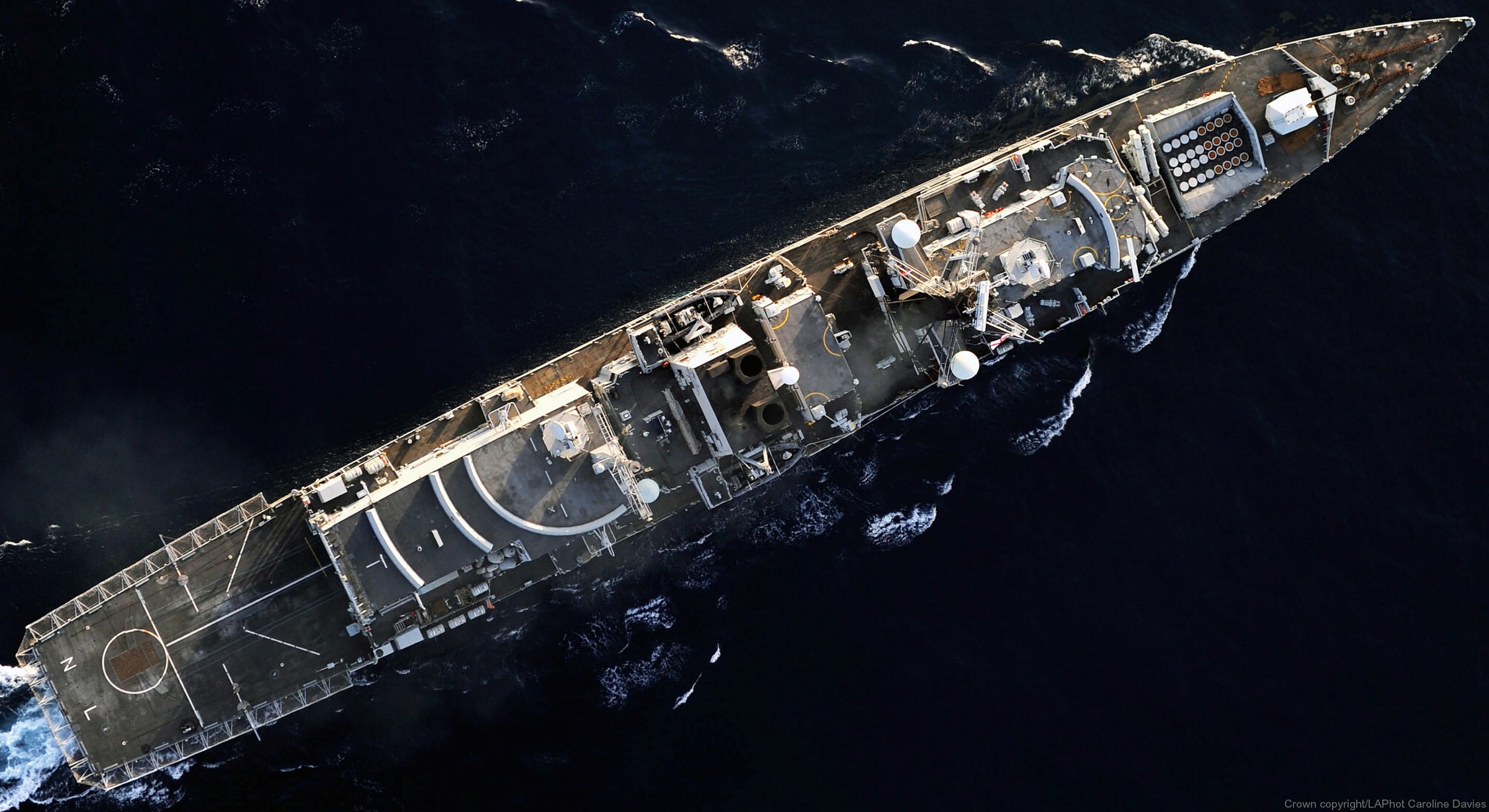 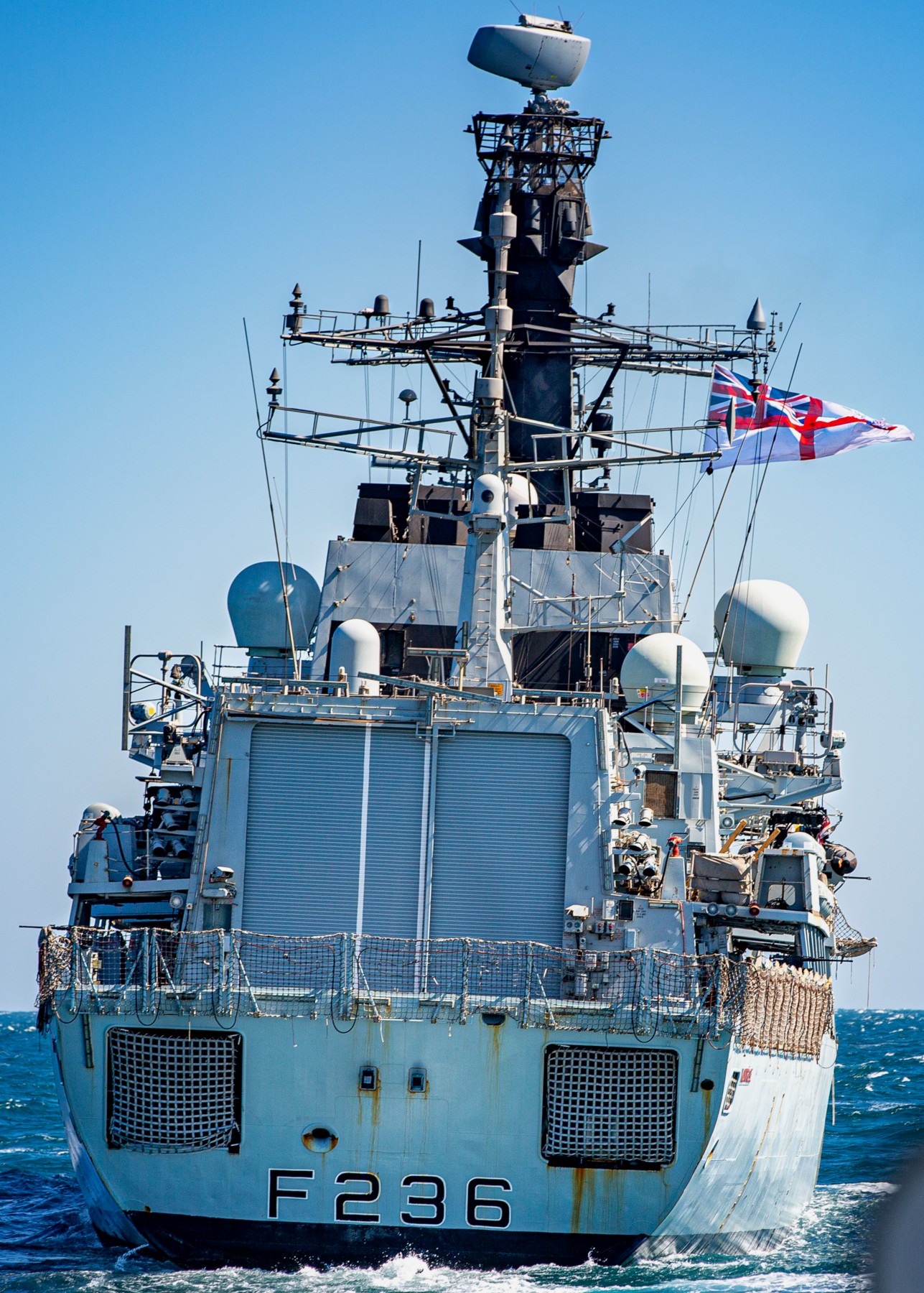 ARMAMENT + DETAILS 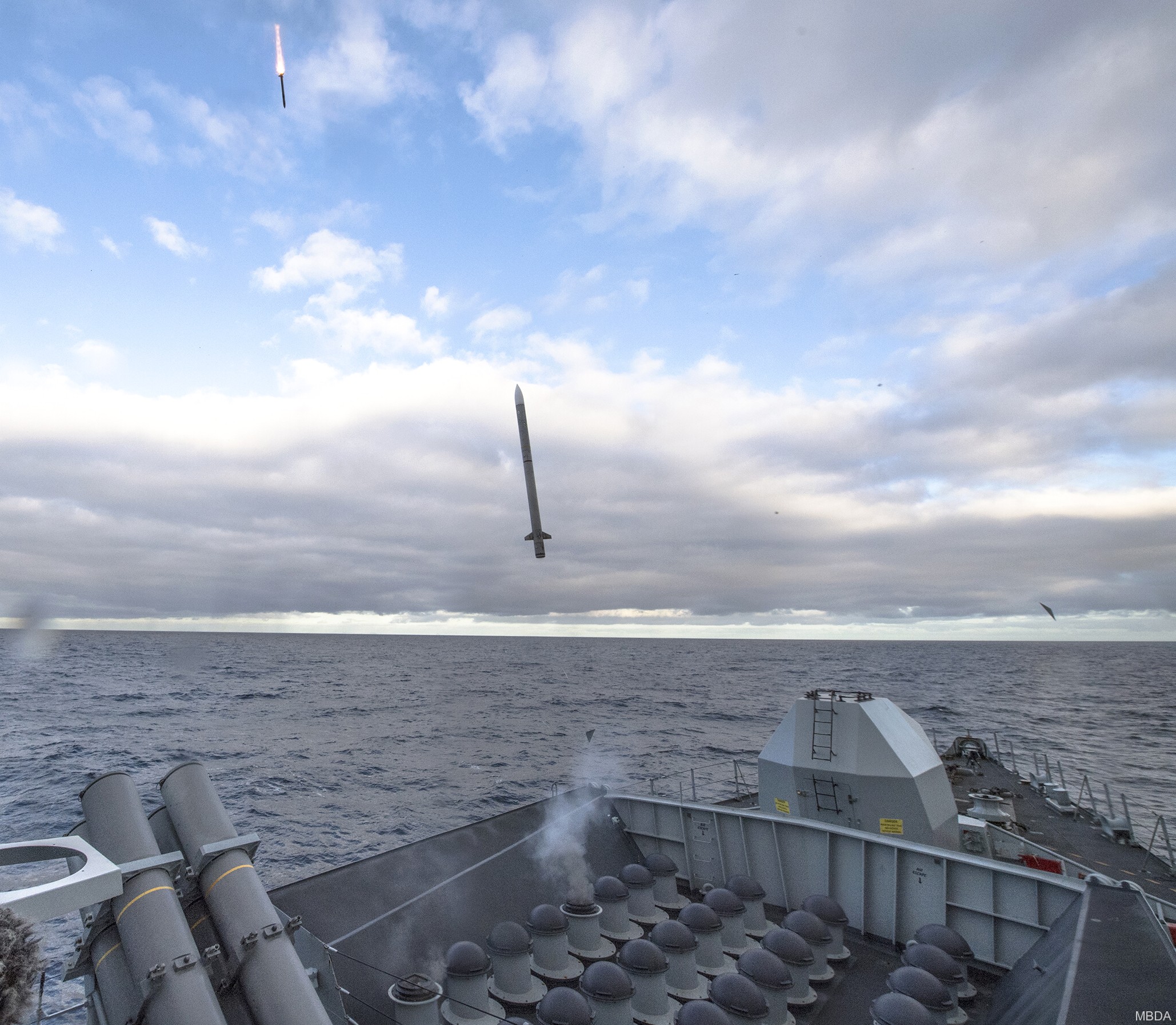 new 32-cell GWS 35 Vertical Launching System (VLS) for CAMM SAM missiles 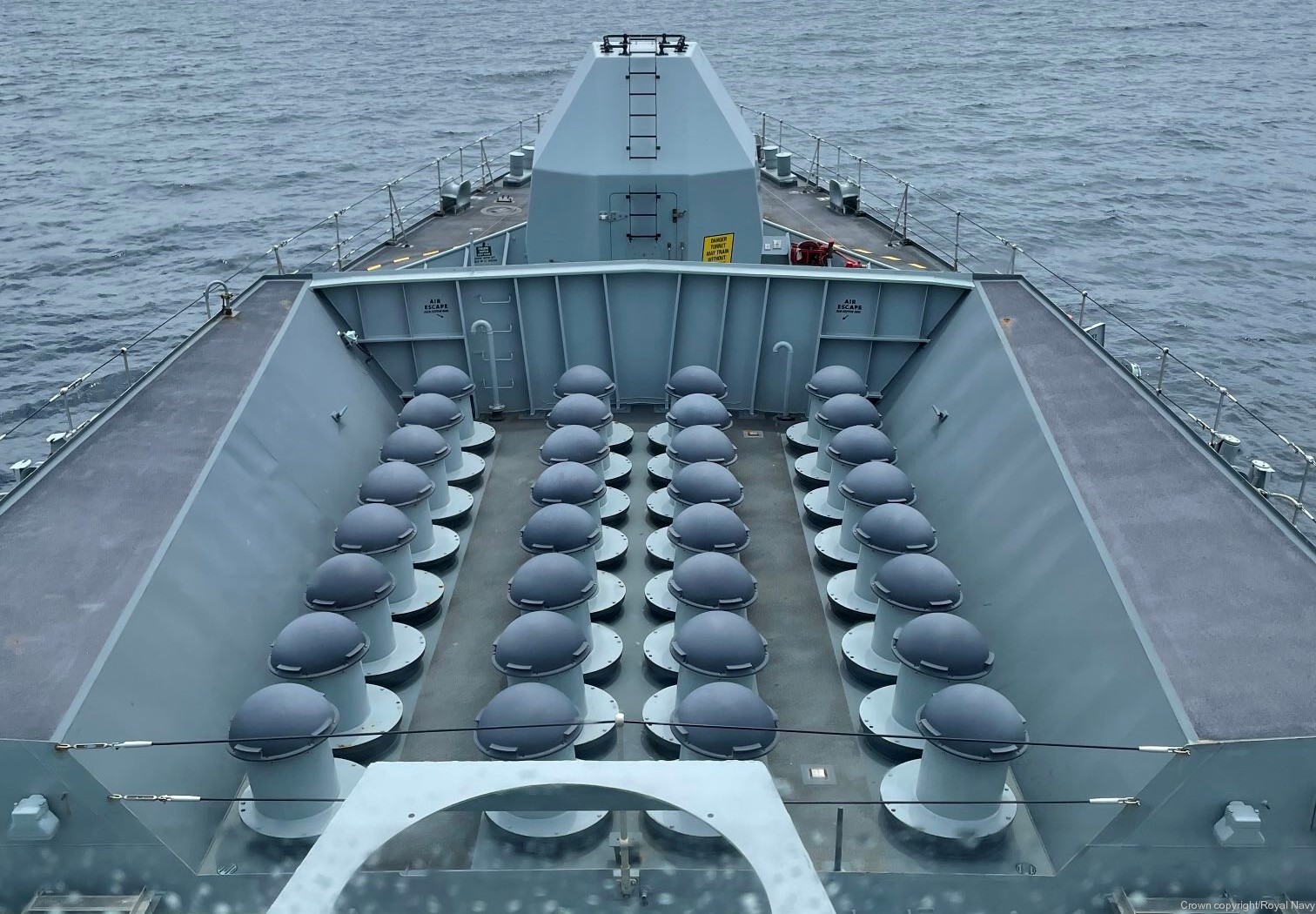 32-cell GWS 35 Vertical Launching System (VLS) for CAMM SAM missiles 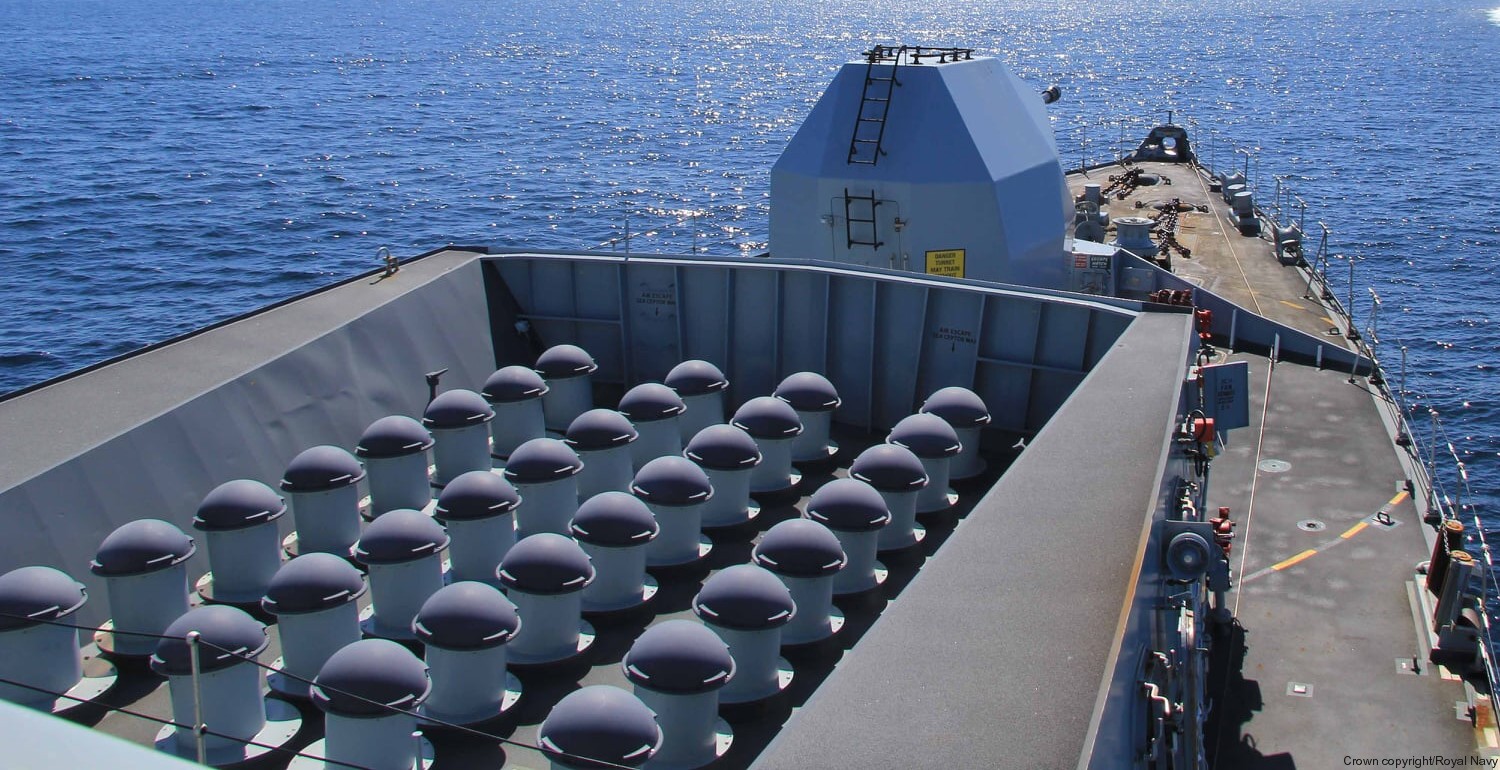 32-cell GWS 35 Vertical Launching System (VLS) for CAMM SAM missiles 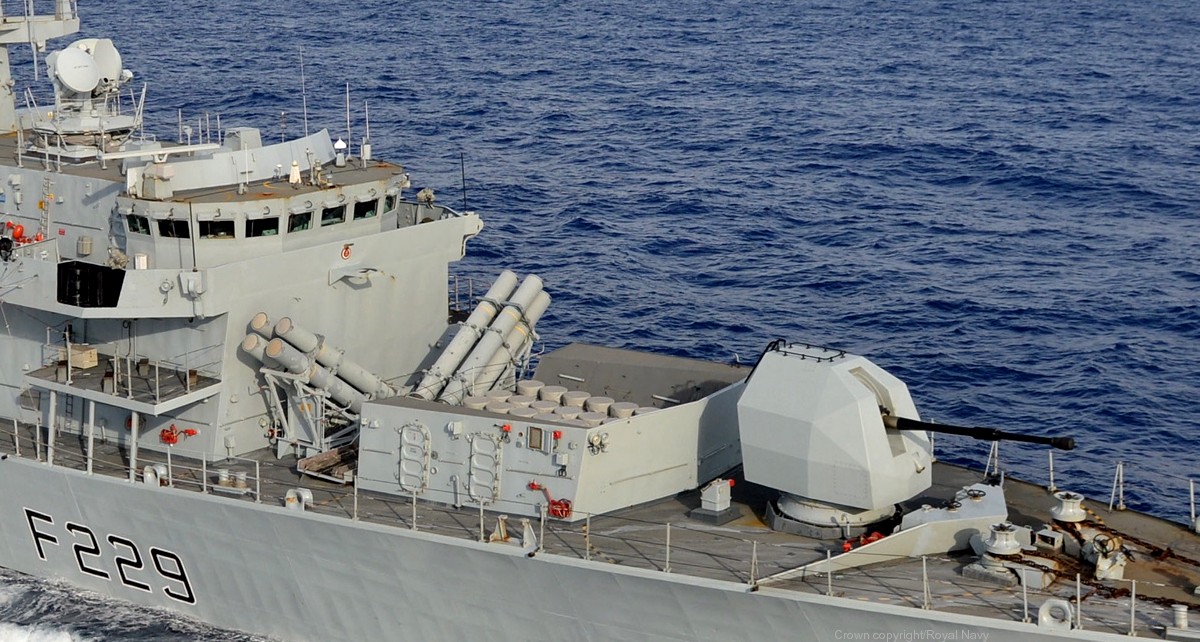 Mk.141 Harpoon SSM launcher, GWS 26 Vertical Launching System (VLS) for Sea Wolf SAM and new Mark 8 Mod.1 gun 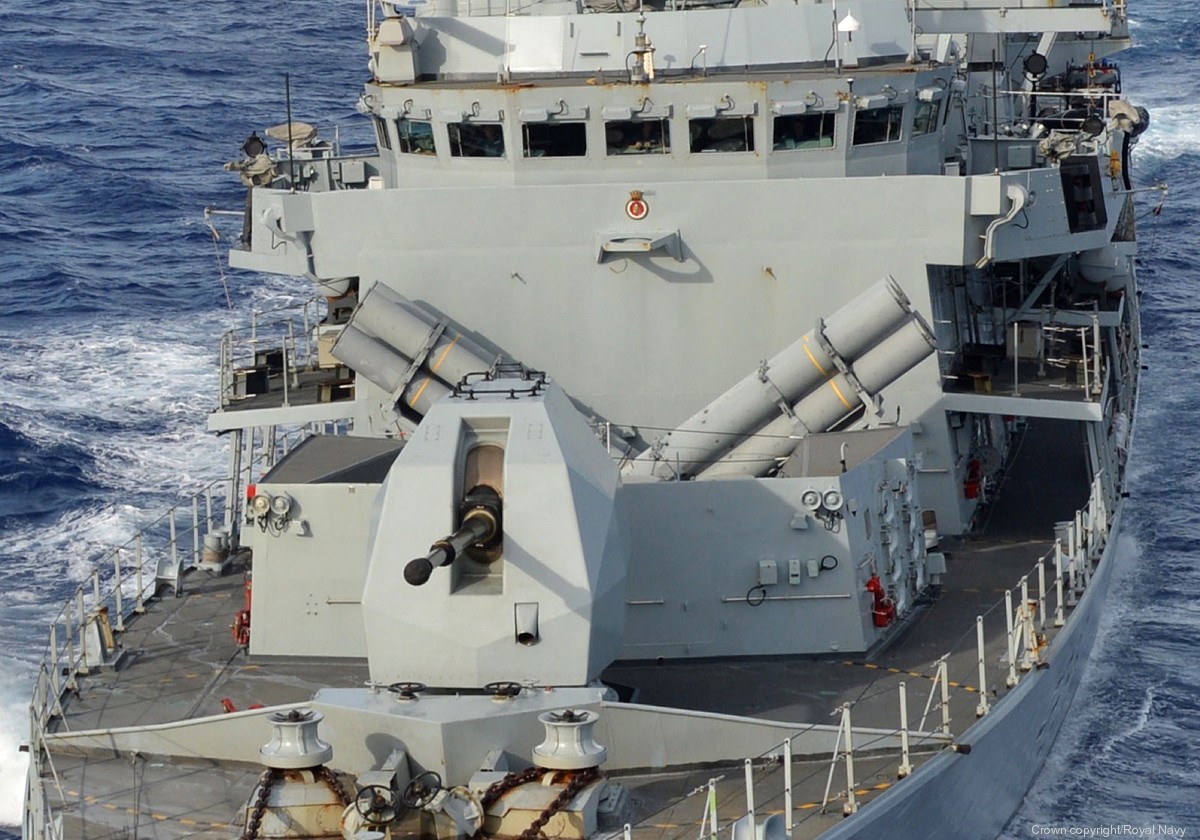 new Mark 8 Mod.1 4.5 inches gun and octuple Harpoon SSM launcher 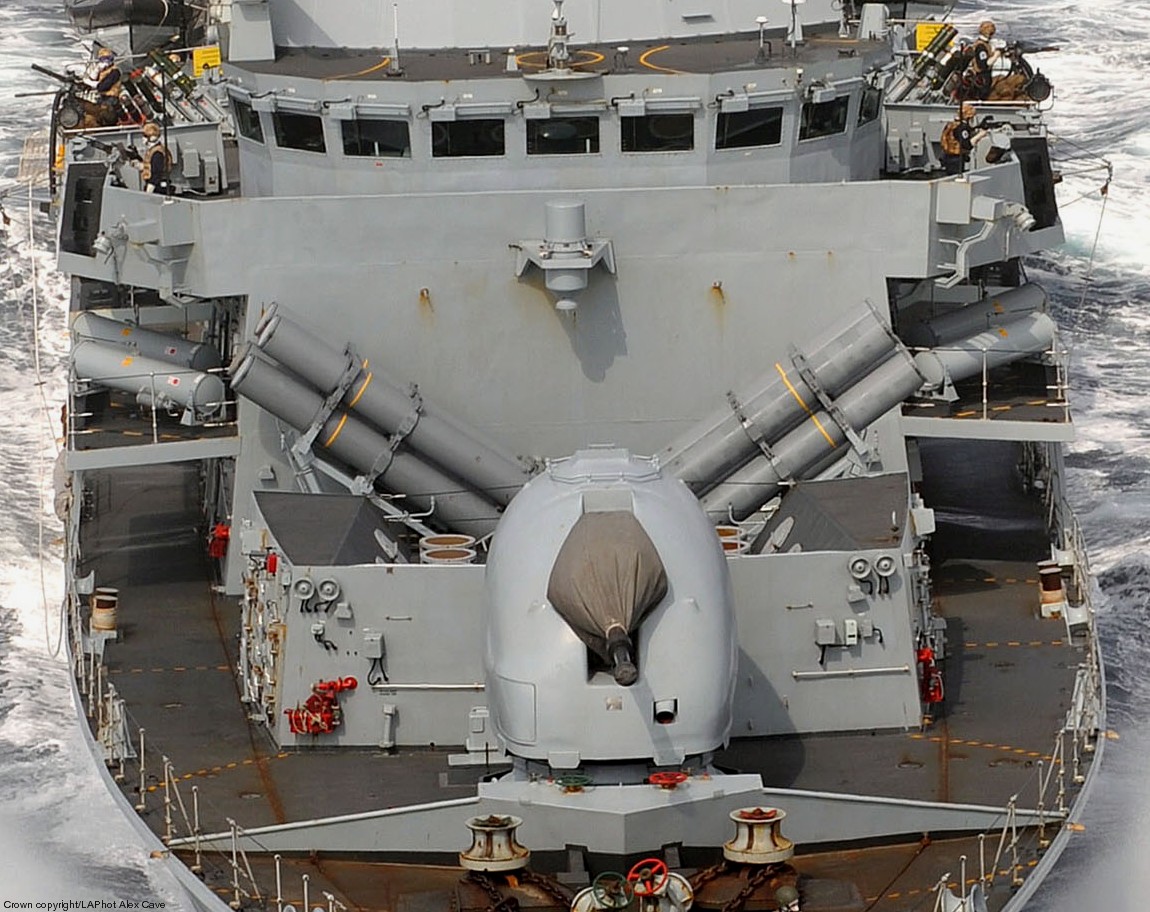 elder Mark 8 Mod.0 gun 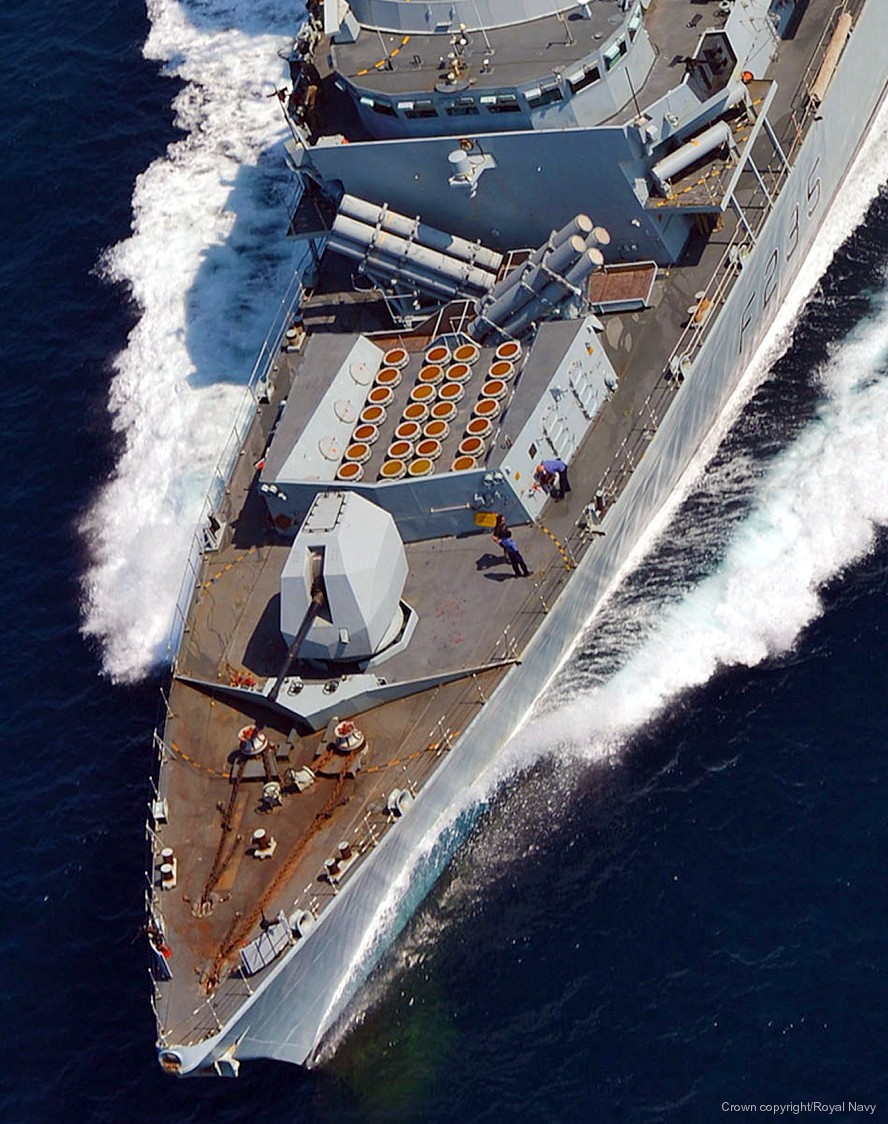 Mark 8 Mod.1 gun, 32-cell GWS 26 VLS for Sea Wolf SAM's and octuple Harpoon SSM launcher 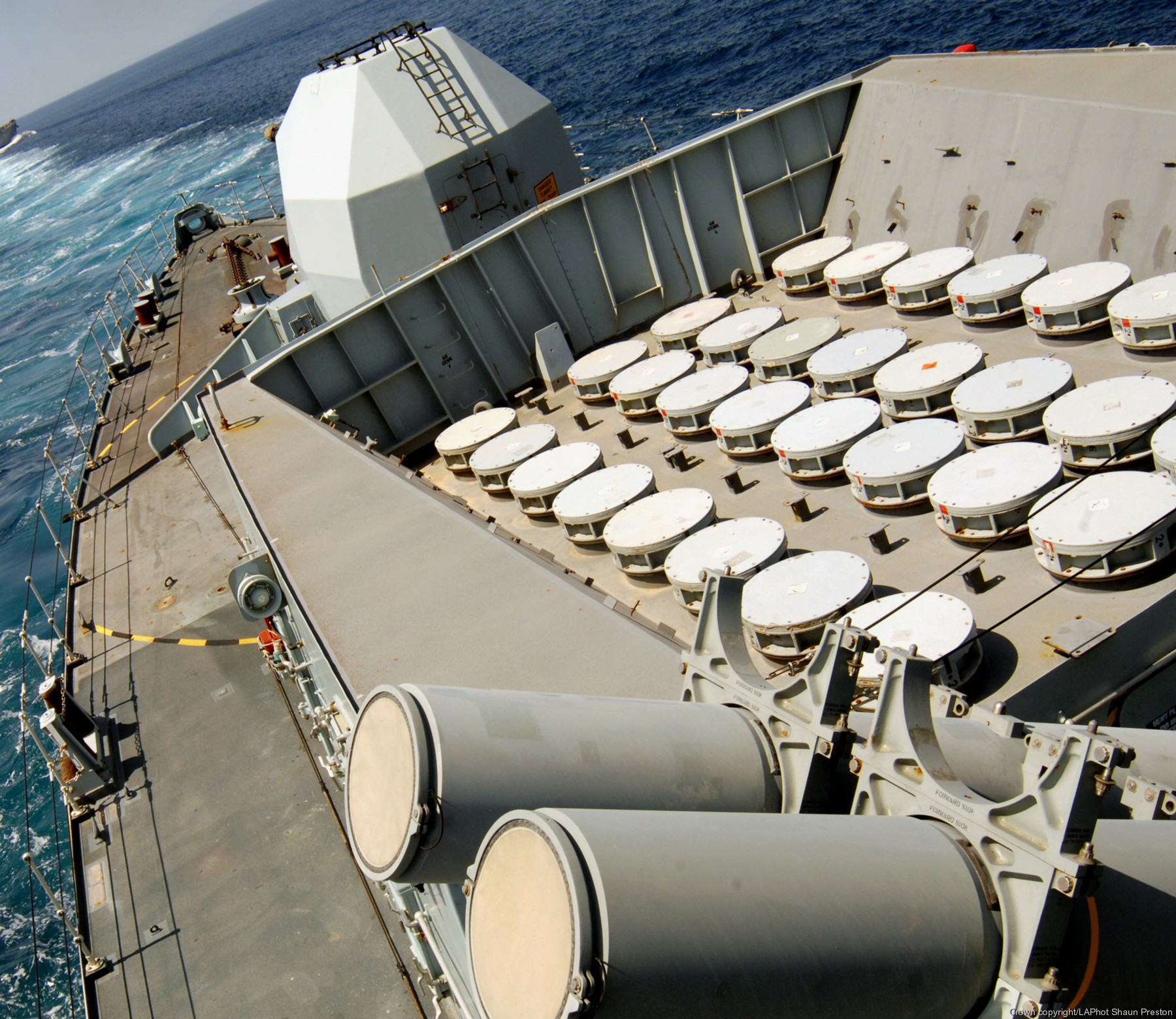 32-cell GWS 26 Vertical Launching System (VLS) for Sea Wolf SAM missiles 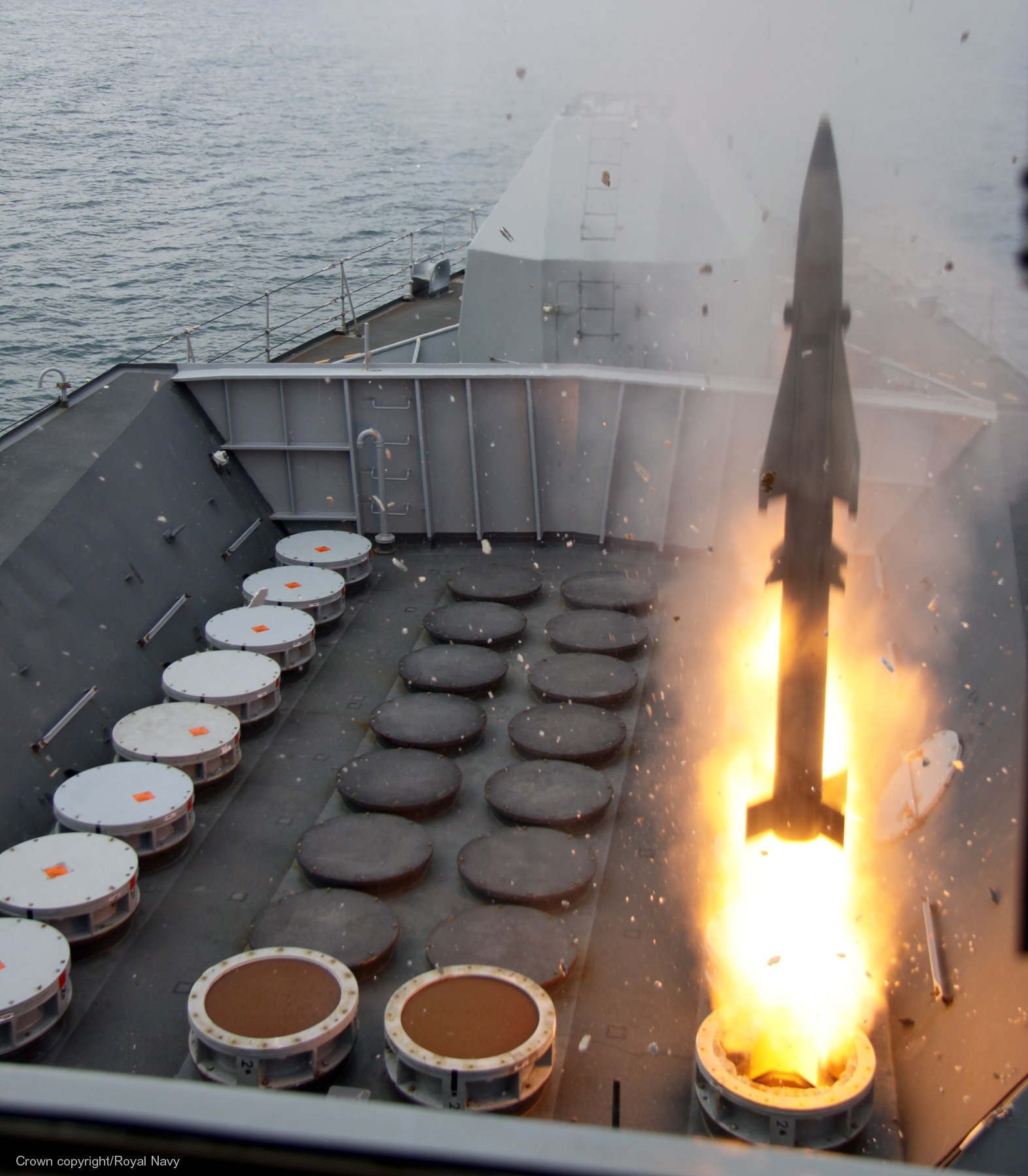 a Sea Wolf SAM missile was launched from the GWS 26 VLS 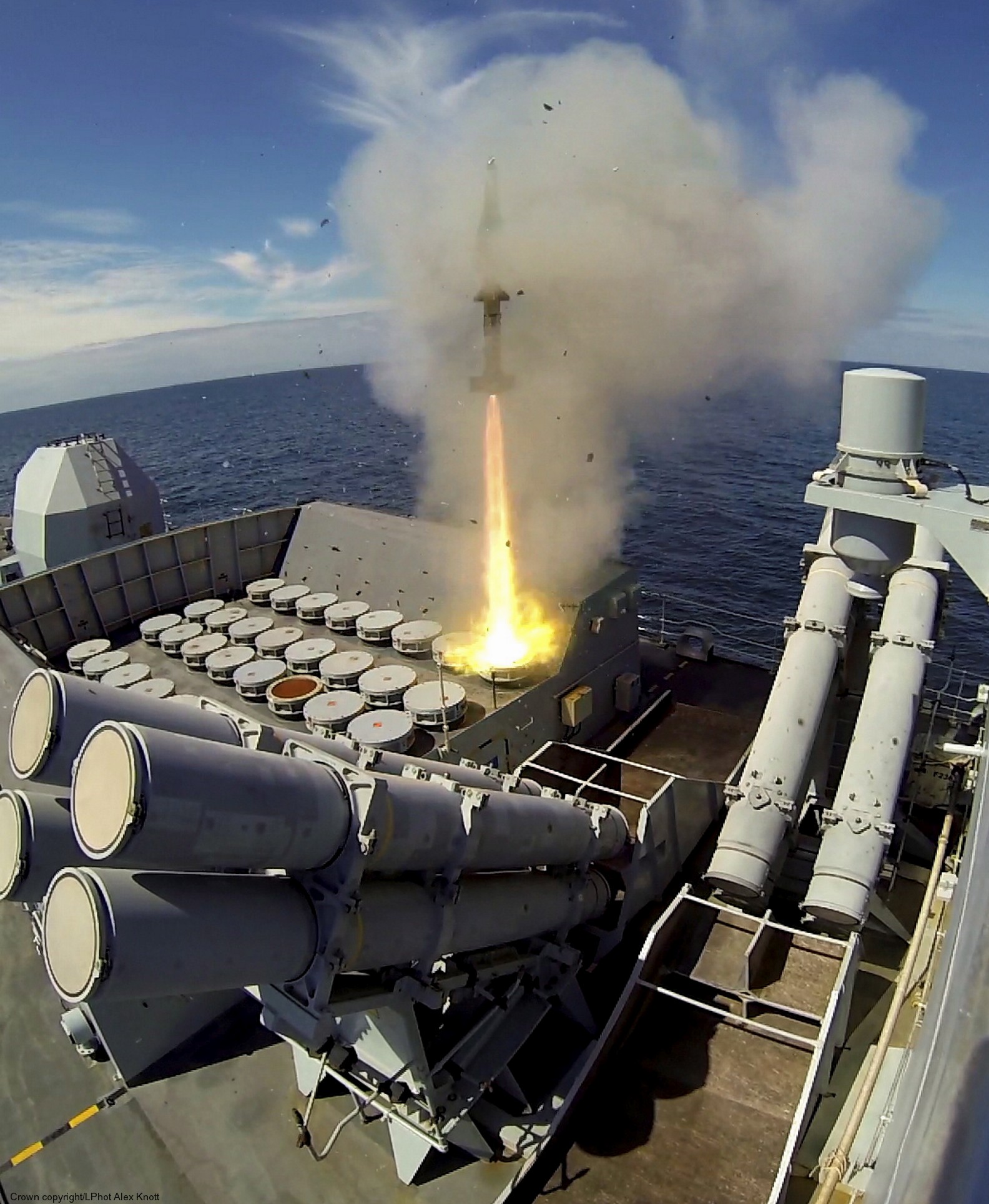 a Sea Wolf SAM missile was launched from the GWS 26 VLS 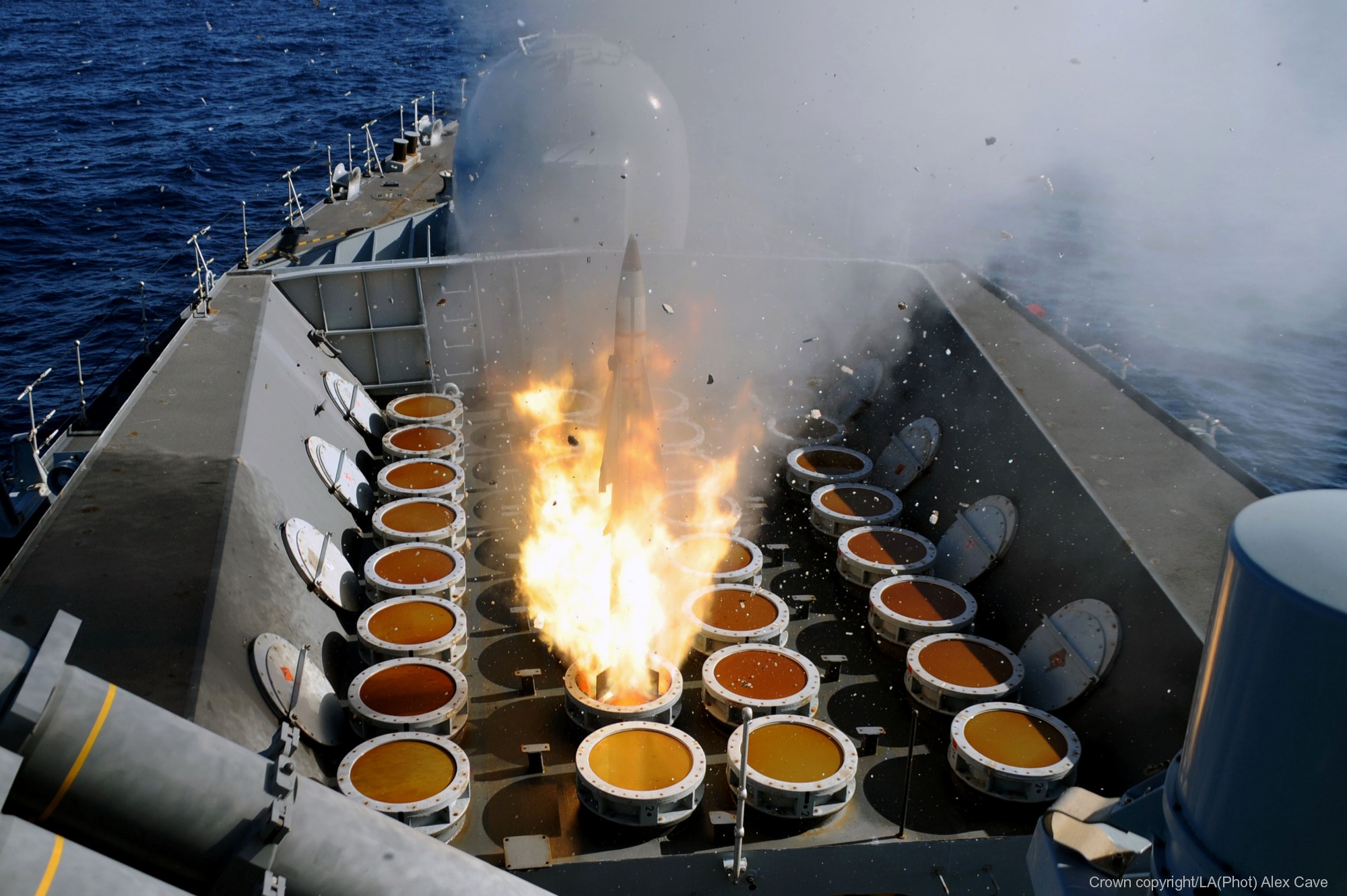 a Sea Wolf SAM missile was launched from the GWS 26 VLS 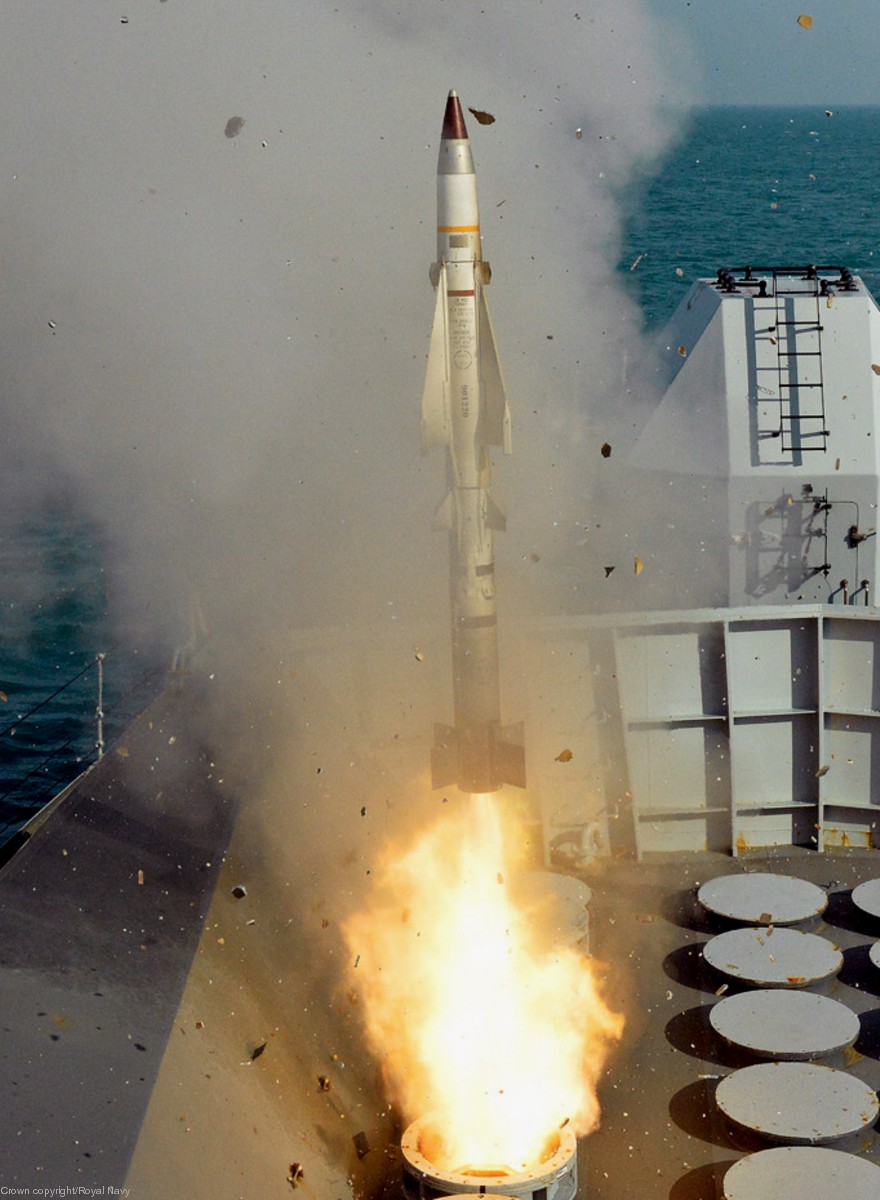 a Sea Wolf SAM missile was launched from the GWS 26 VLS 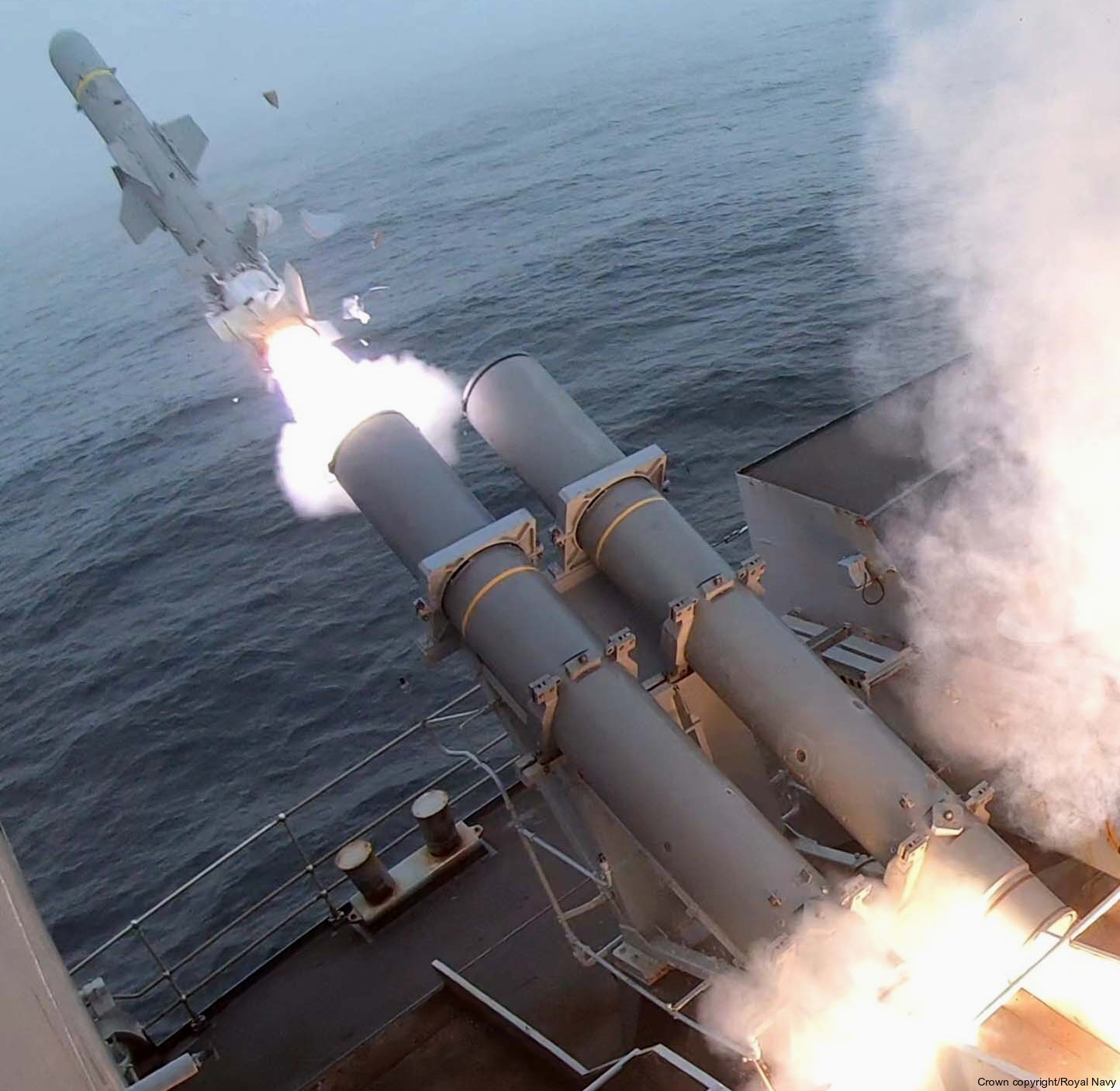 an RGM-84 Harpoon SSM was launched from the Mk.141 tube launcher 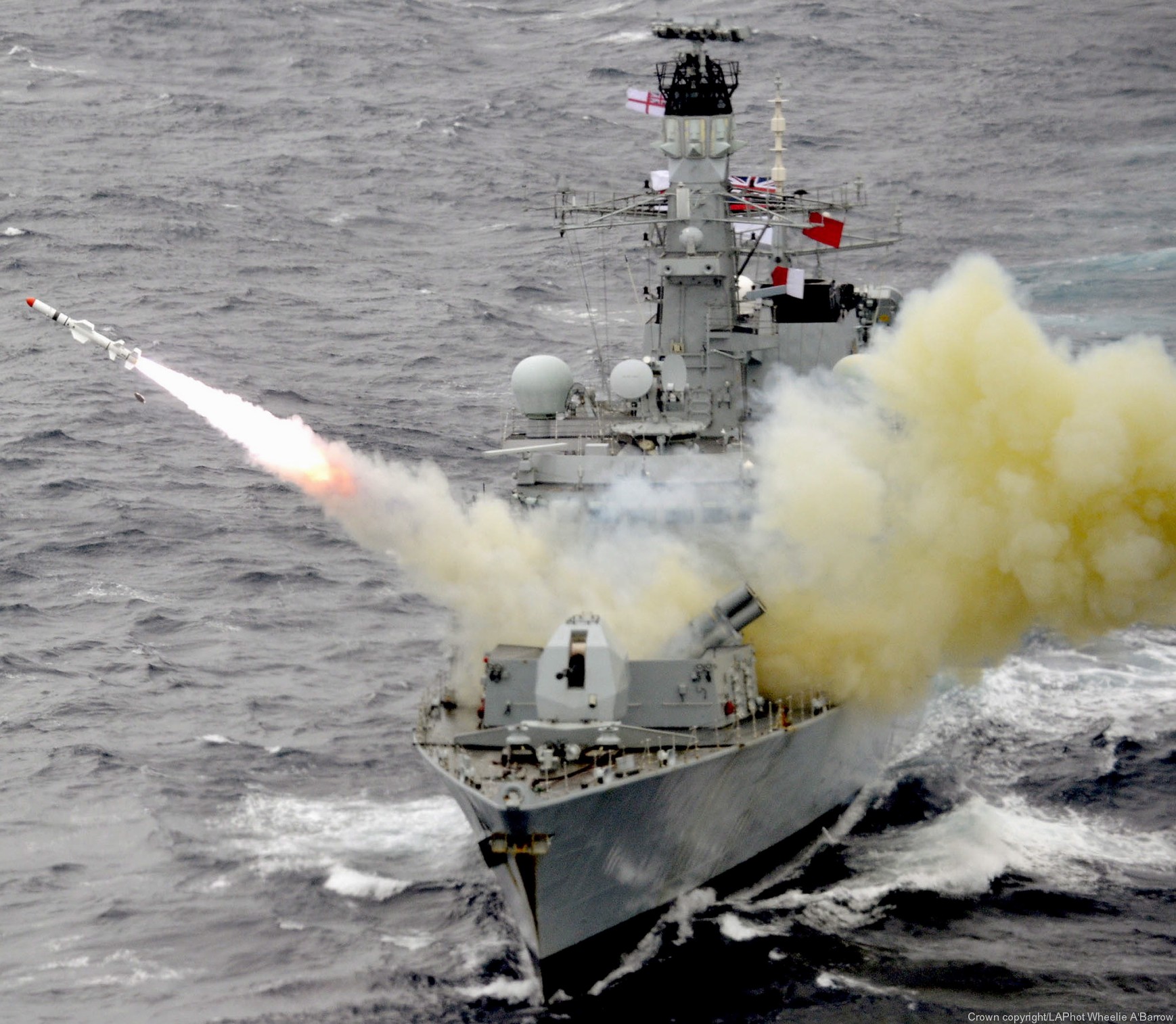 an RGM-84 Harpoon SSM was launched from the Mk.141 tube launcher 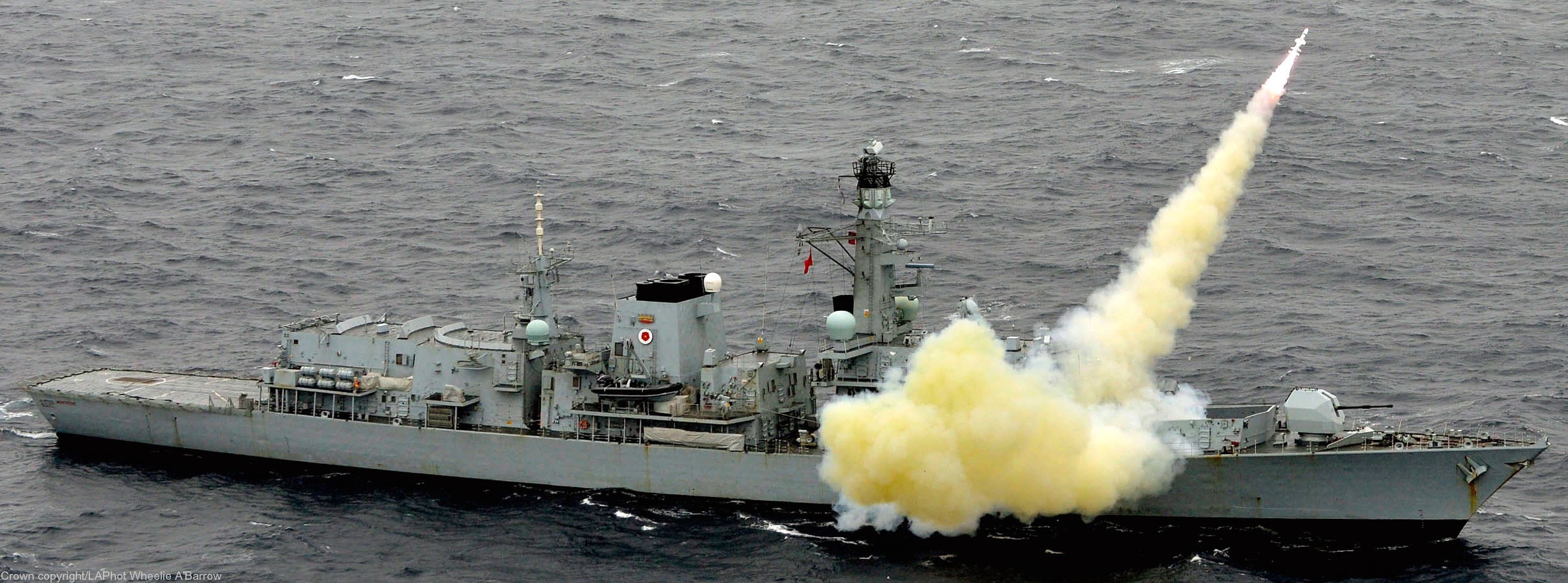 an RGM-84 Harpoon SSM was launched from the Mk.141 tube launcher 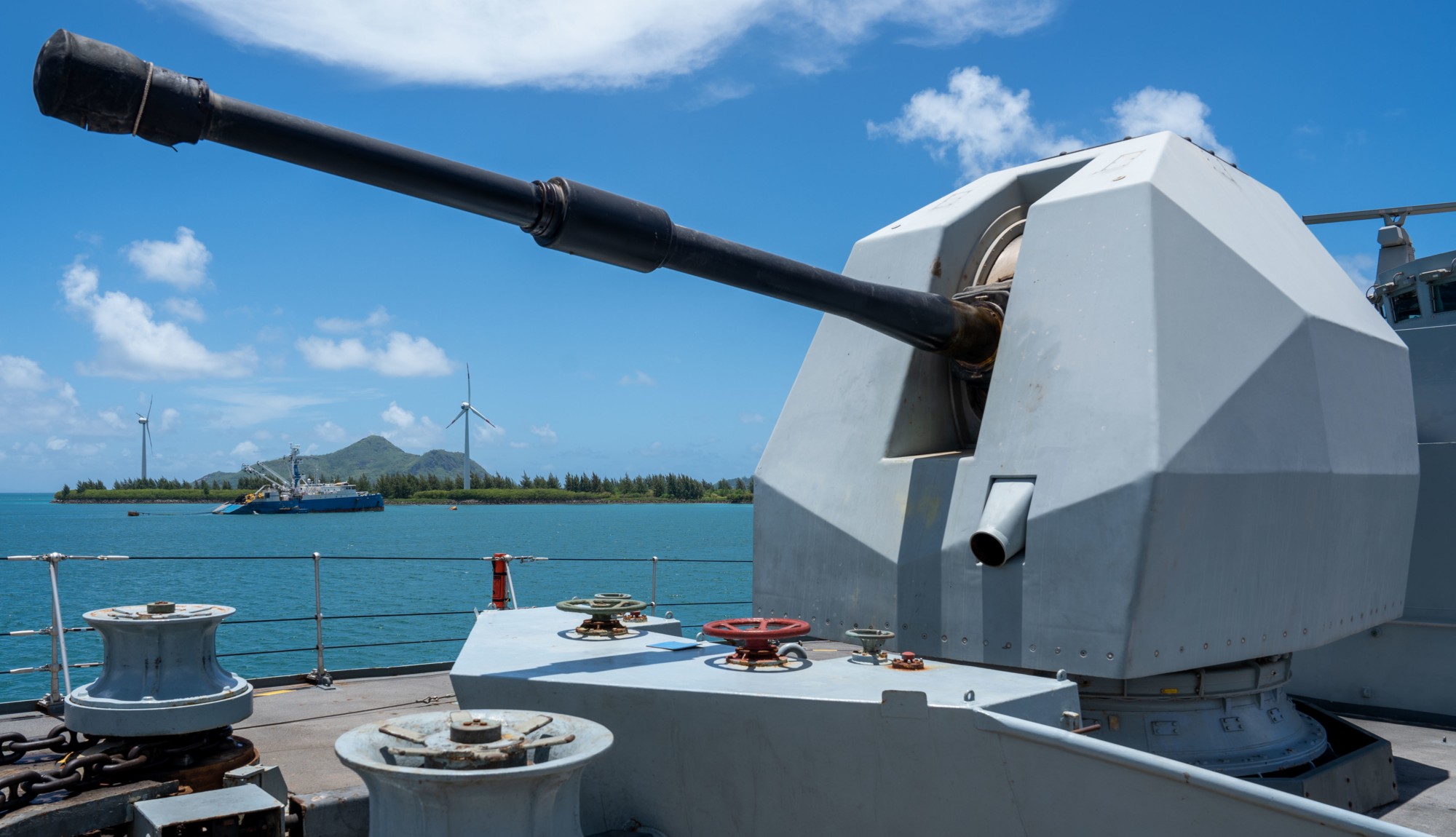 new Mark 8 Mod.1 gun 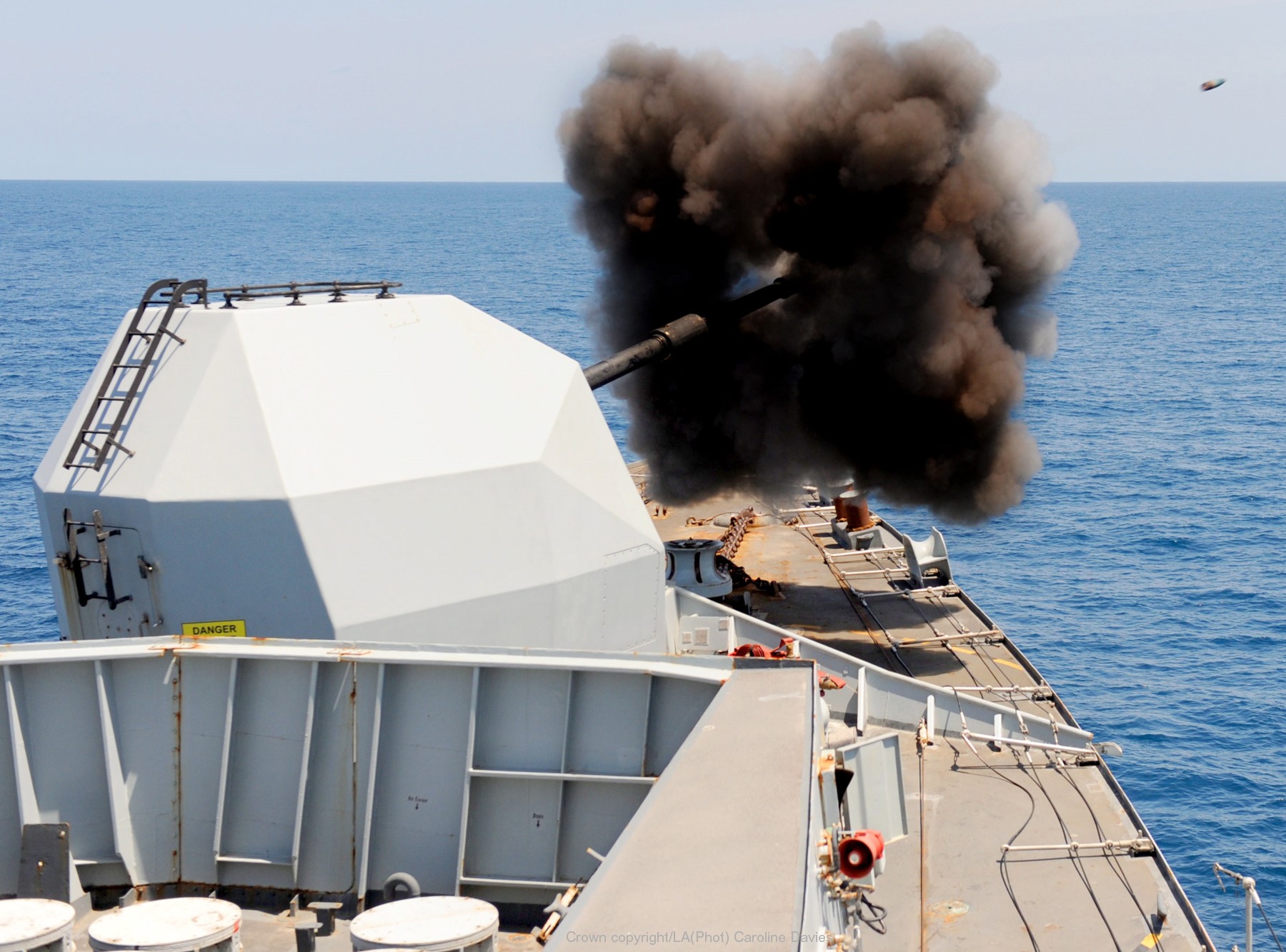 Mark 8 Mod.1 gun fire 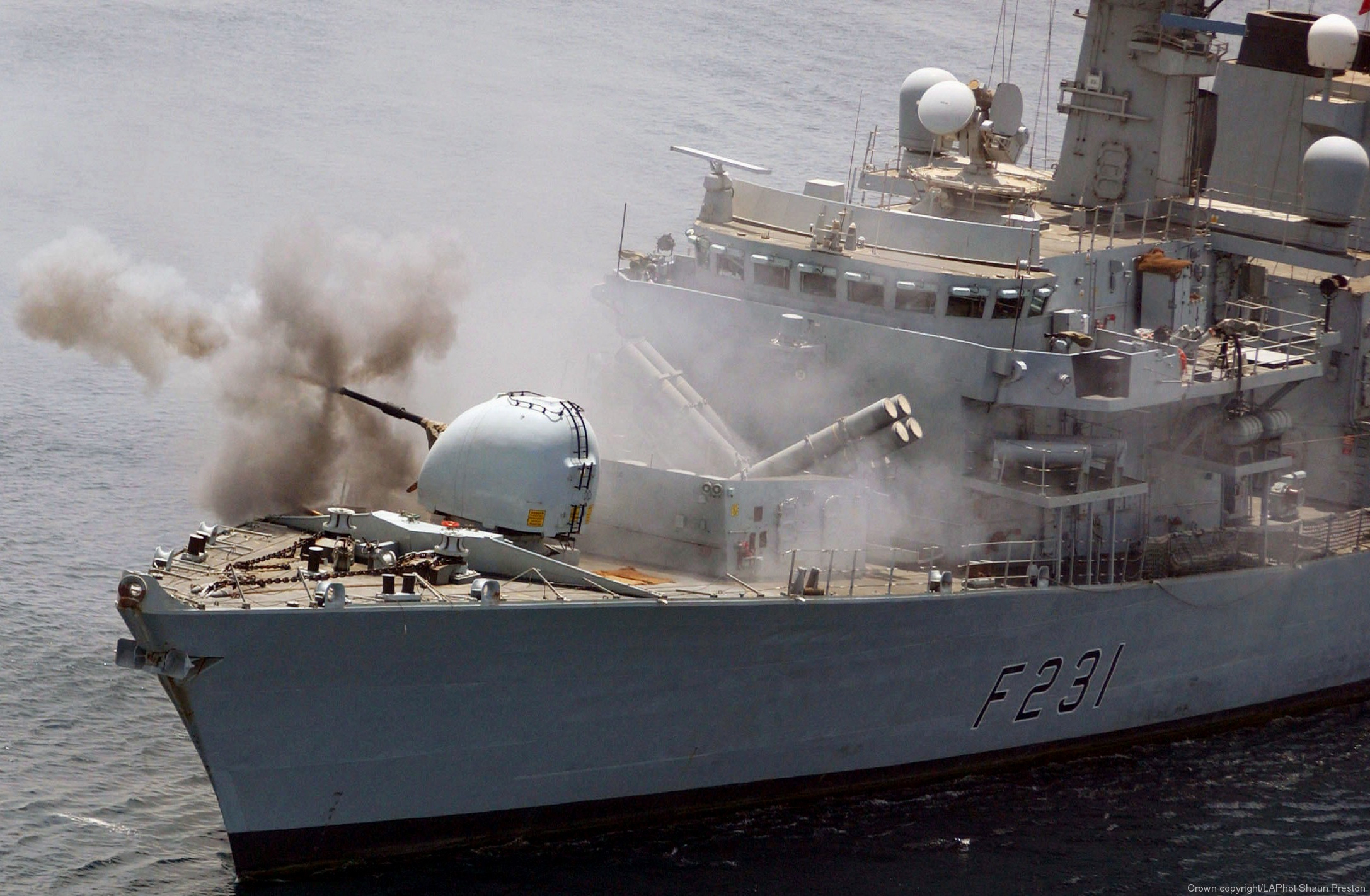 elder Mark 8 Mod.0 gun fire 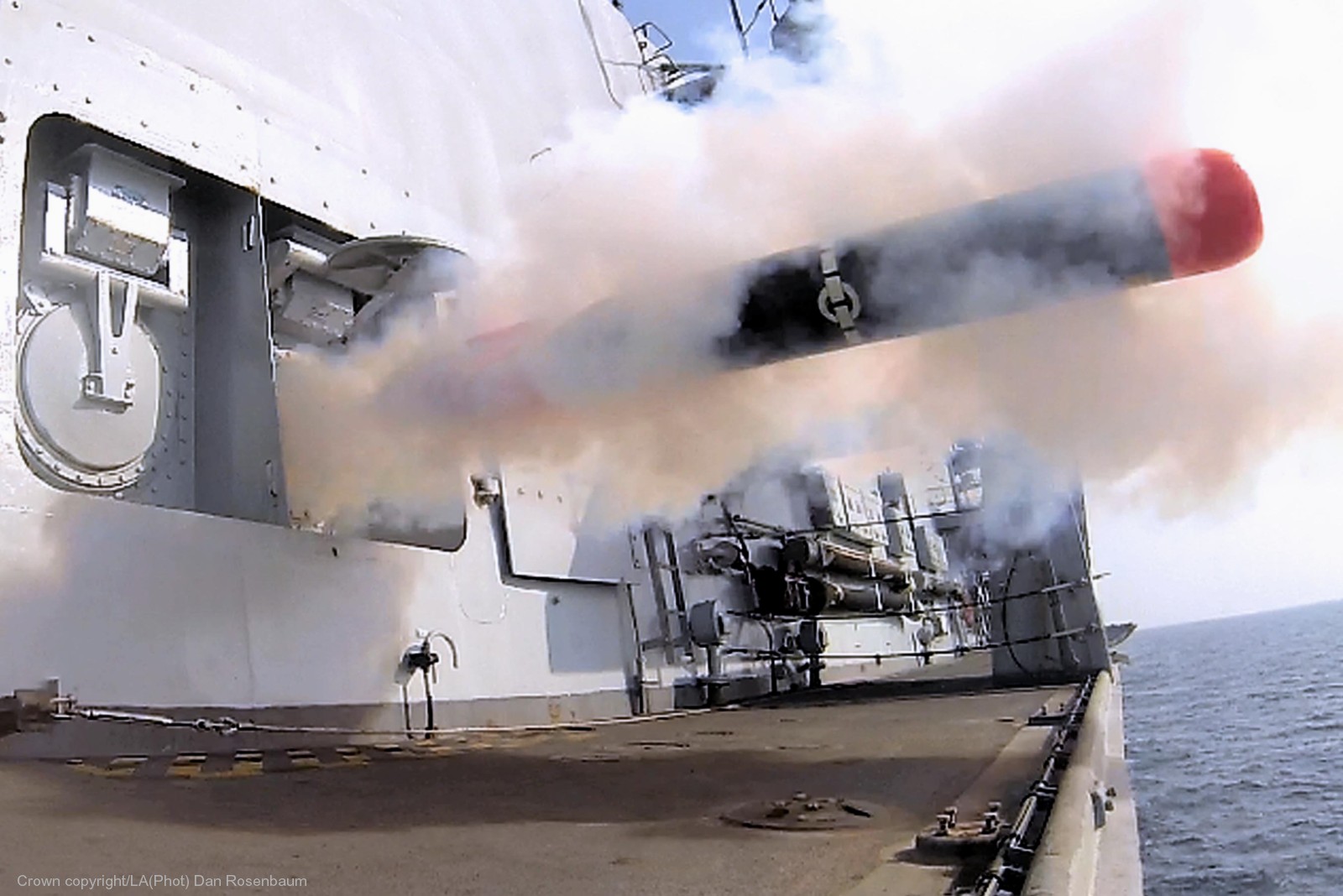 Stingray Torpedo was launched from the integrated Torpedo Tubes 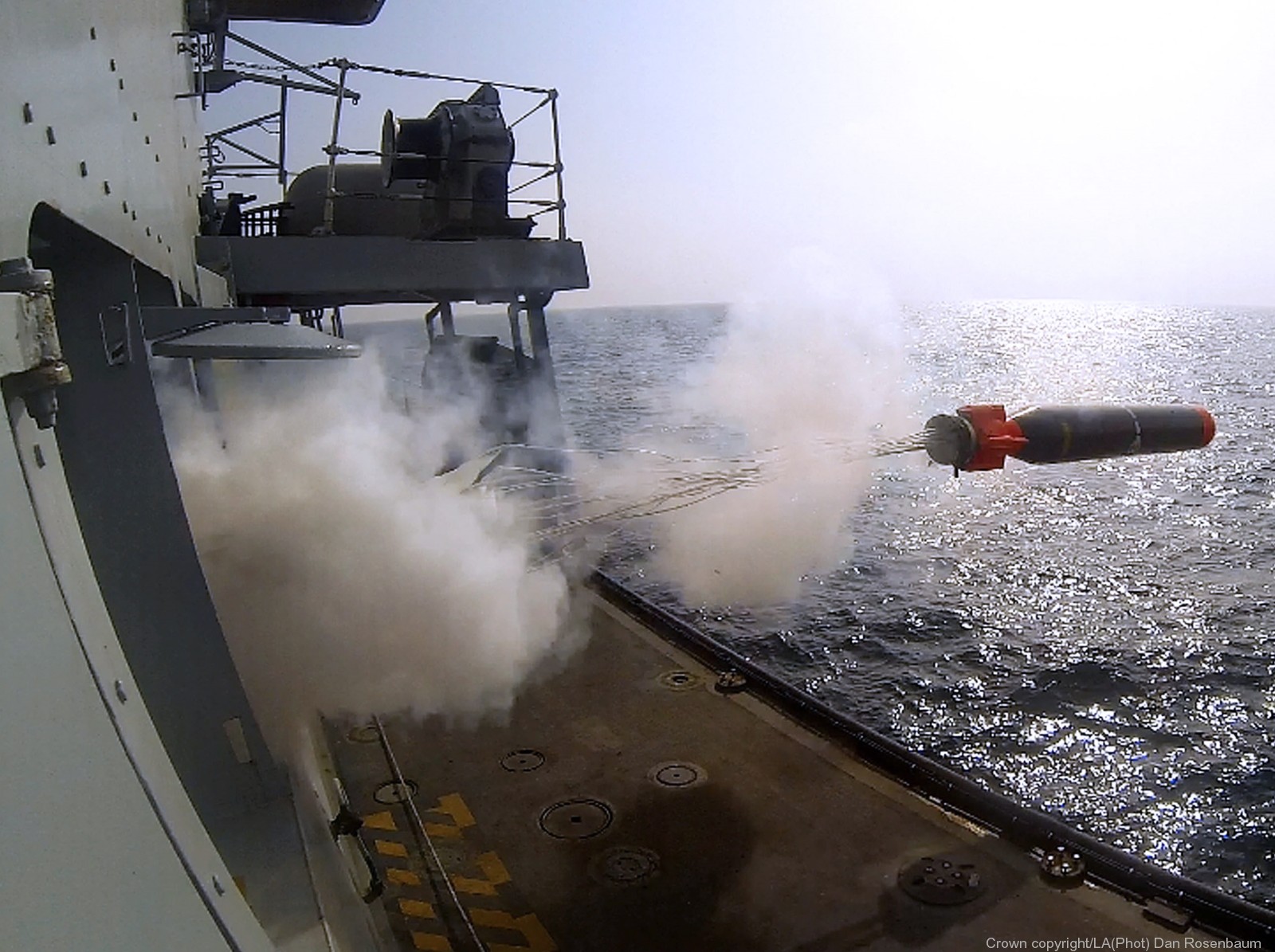 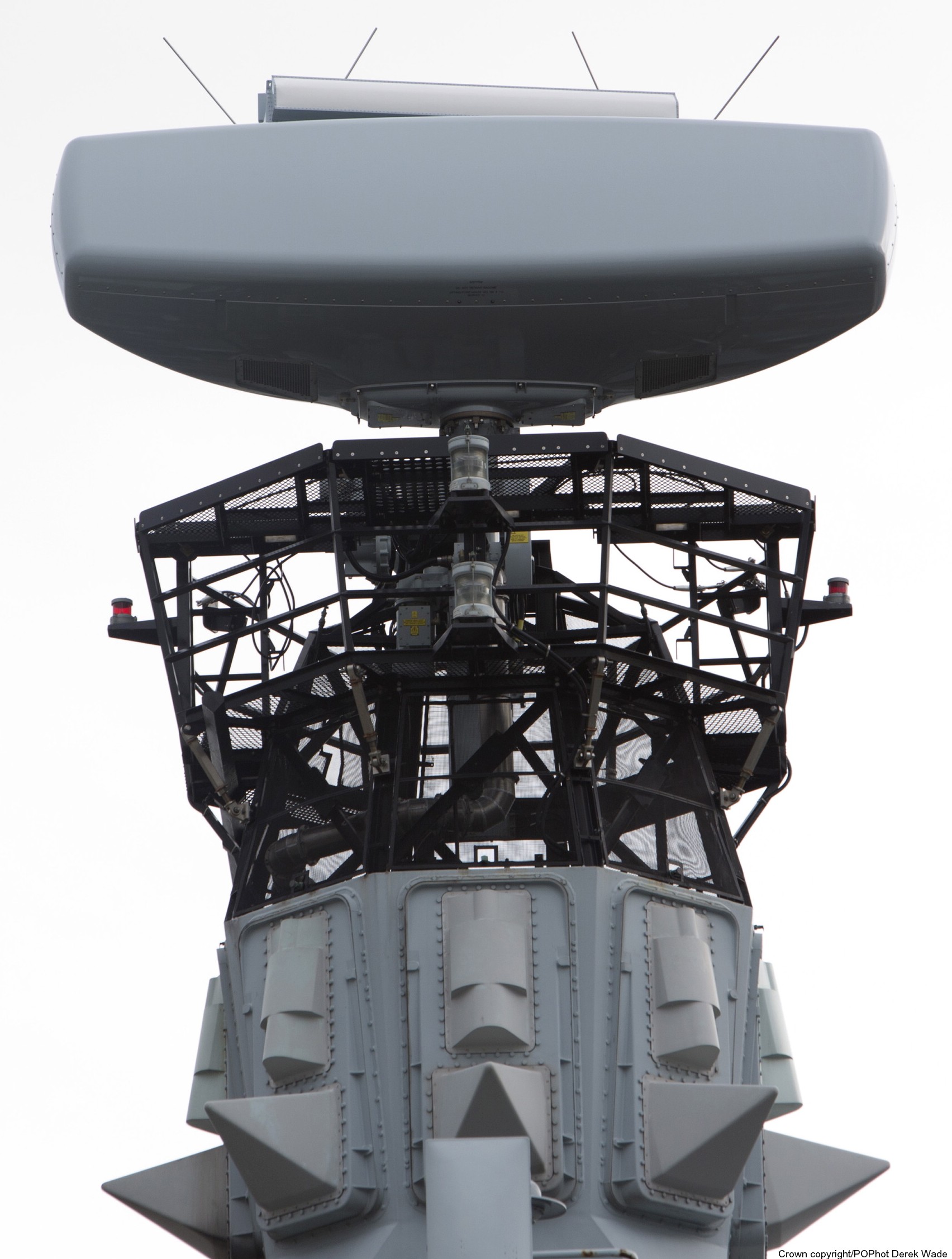 Type 997 Artisan 3D Radar 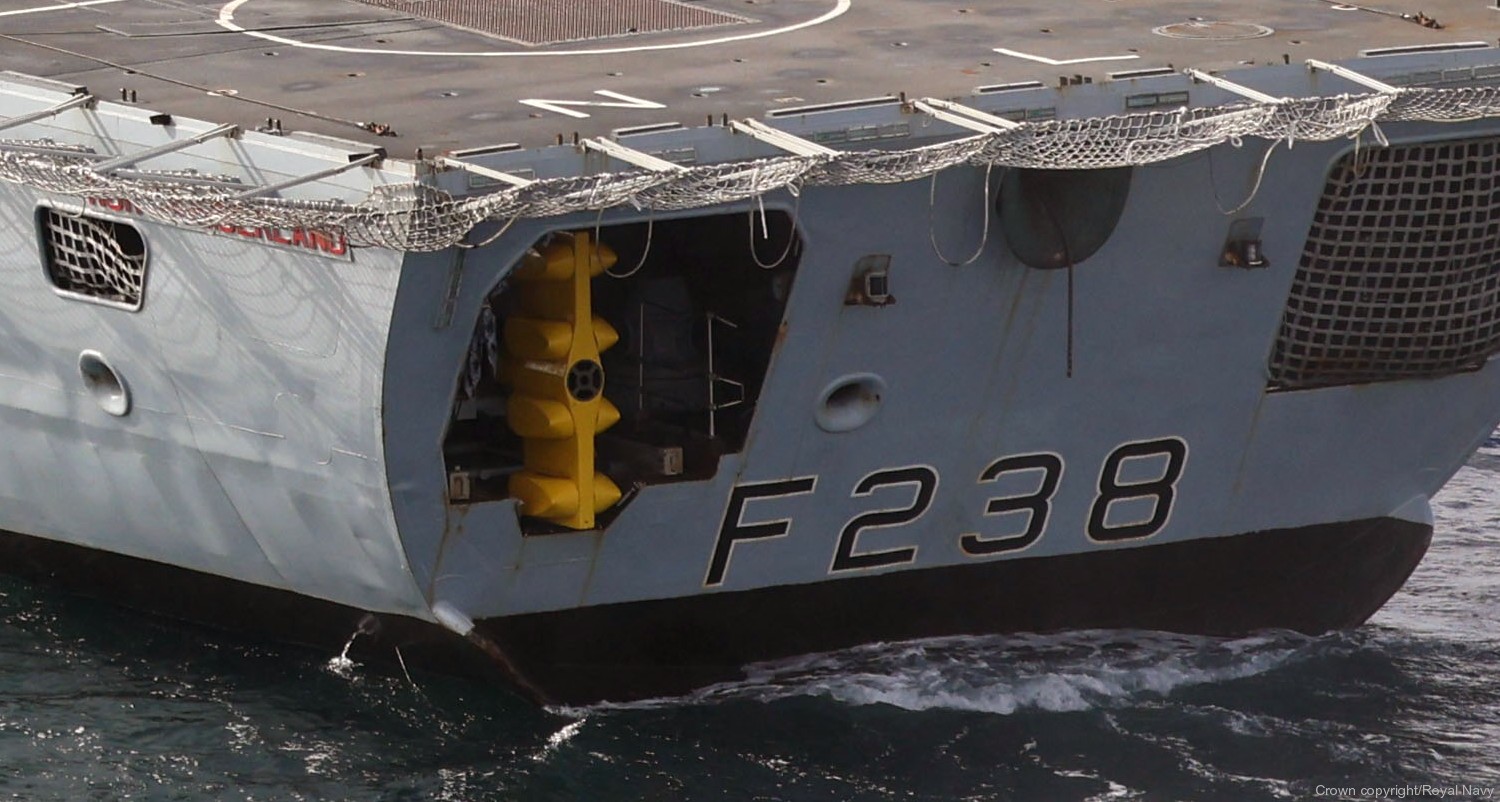 Thales Sonar 2087 towed array sonar system (TASS) |
|
|
seaforces.org
|
Royal
Navy start page
| |